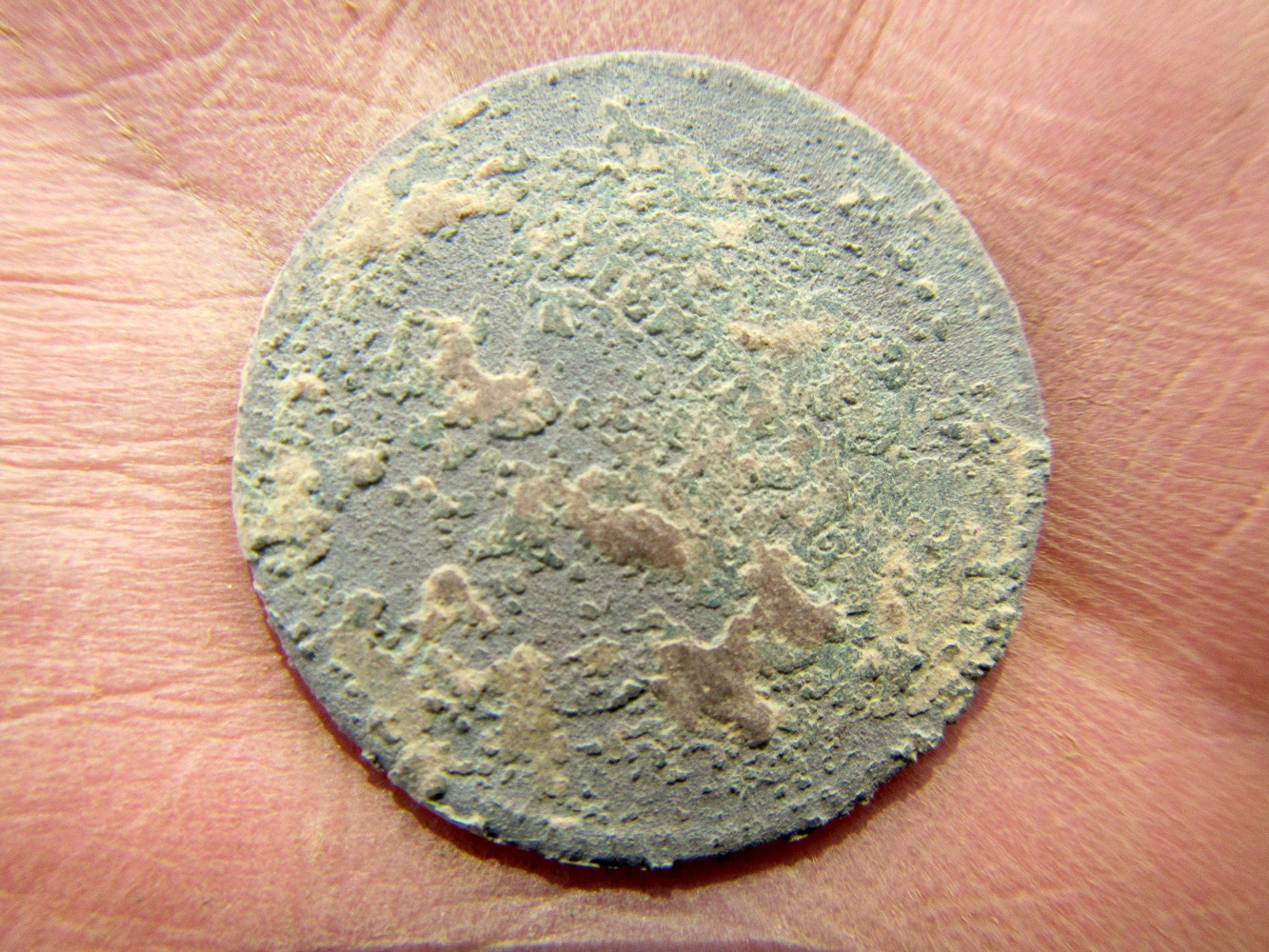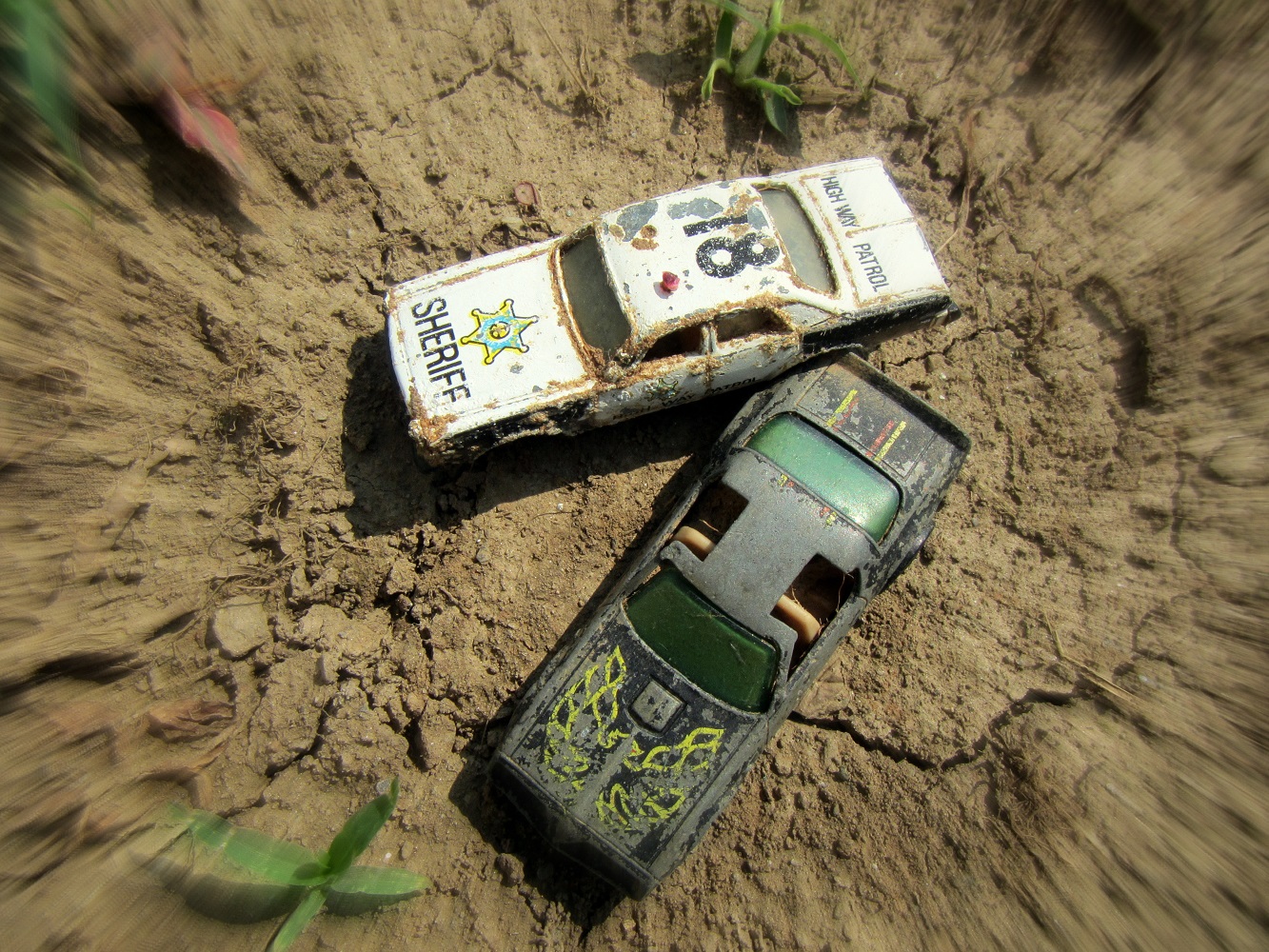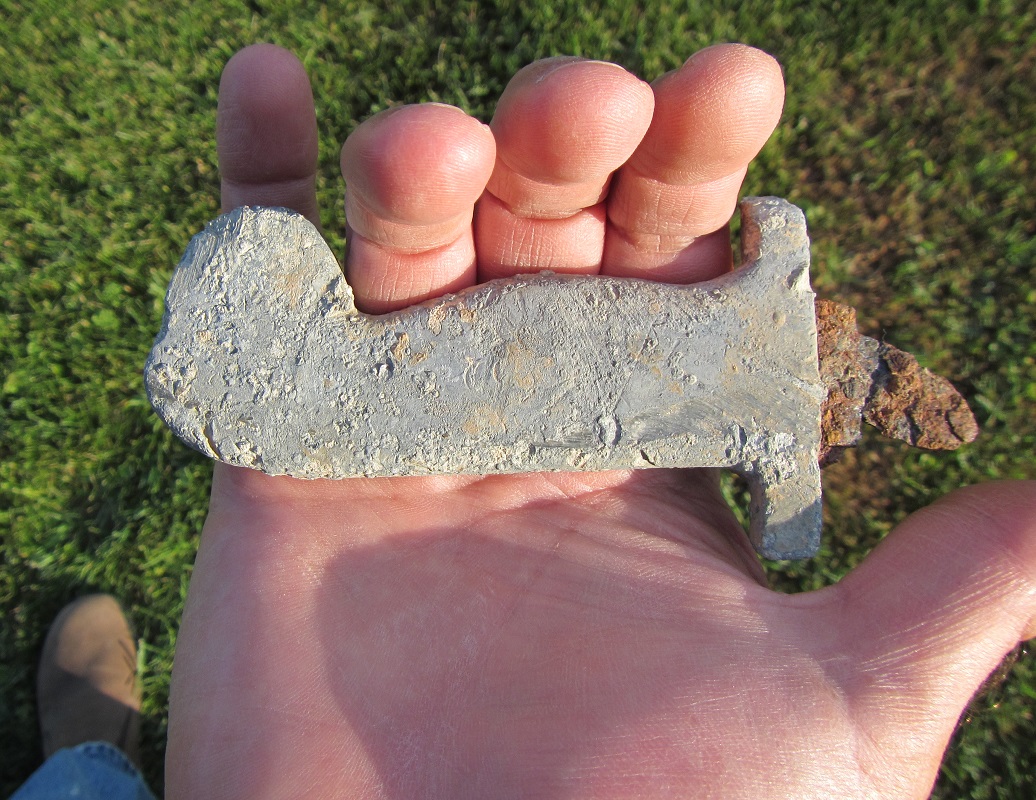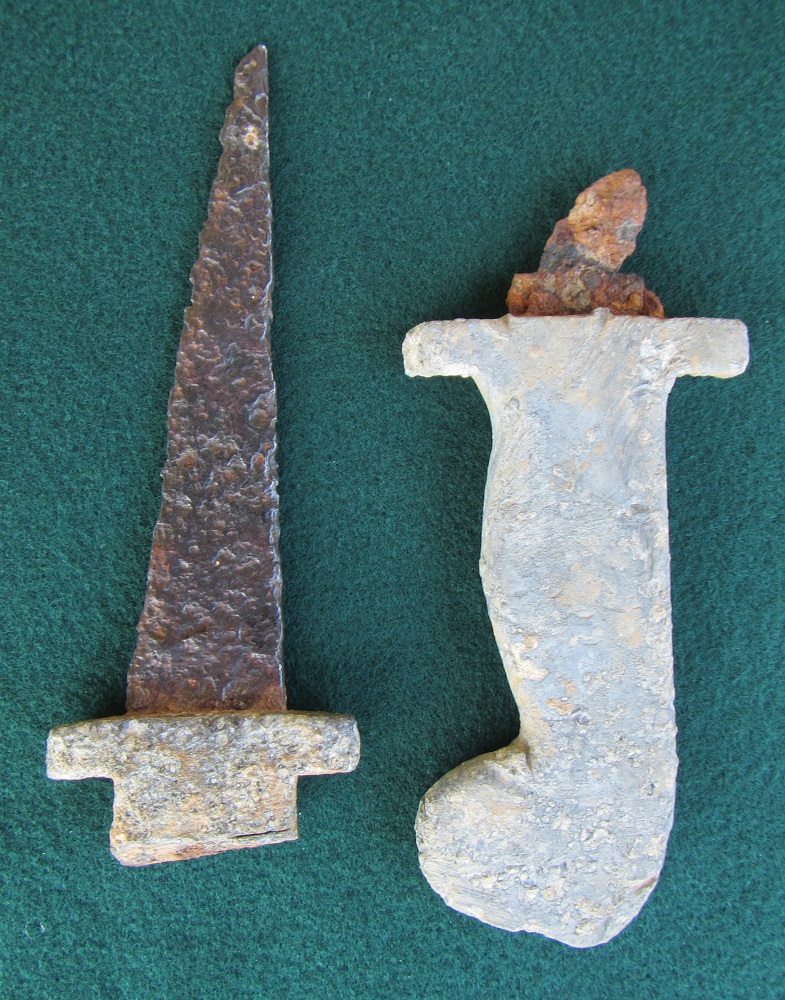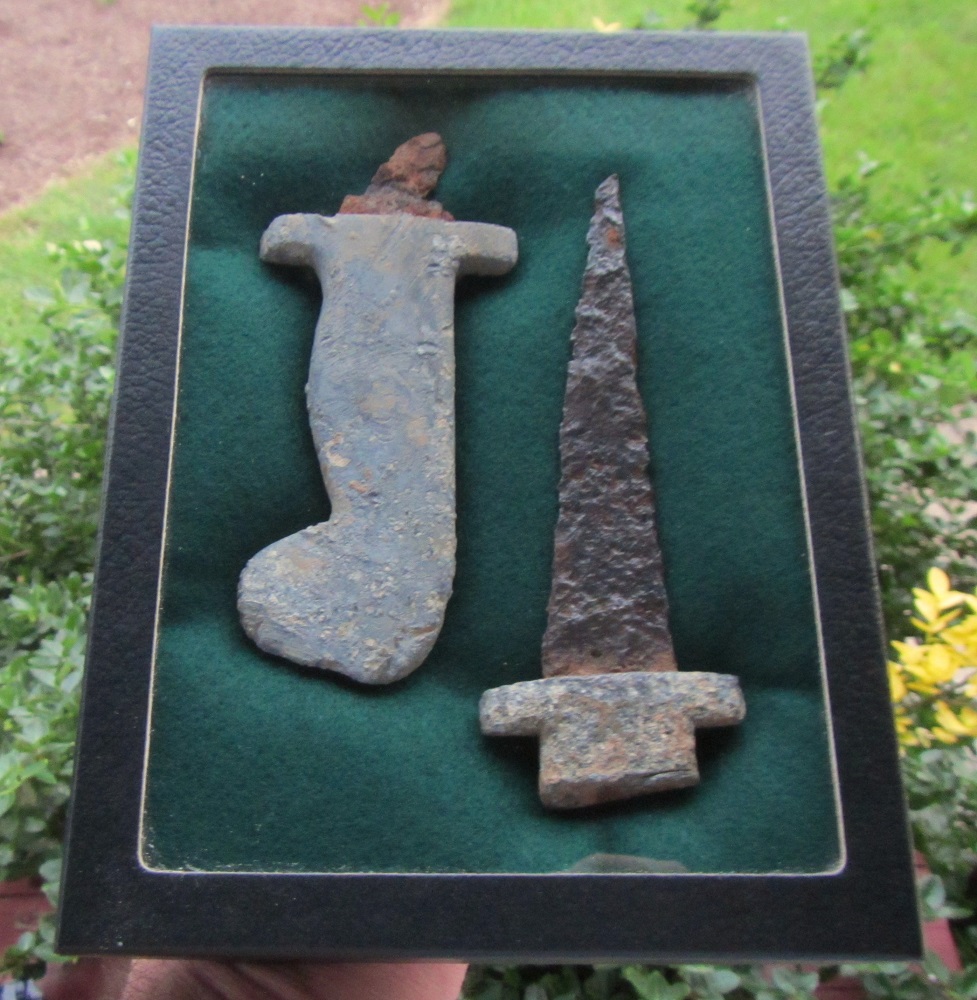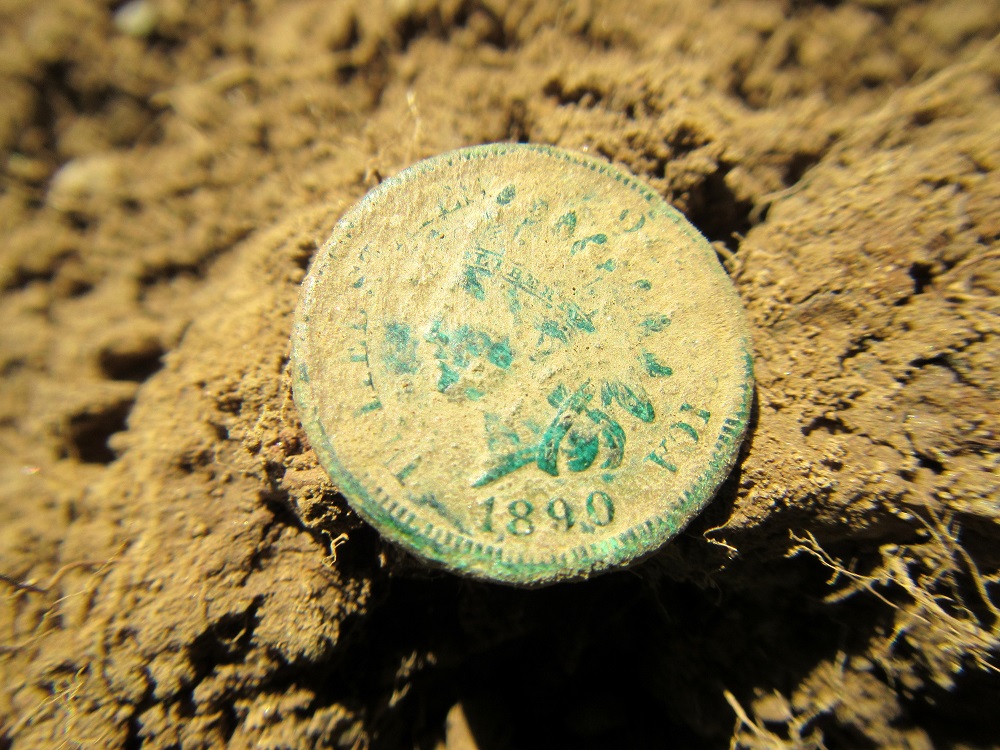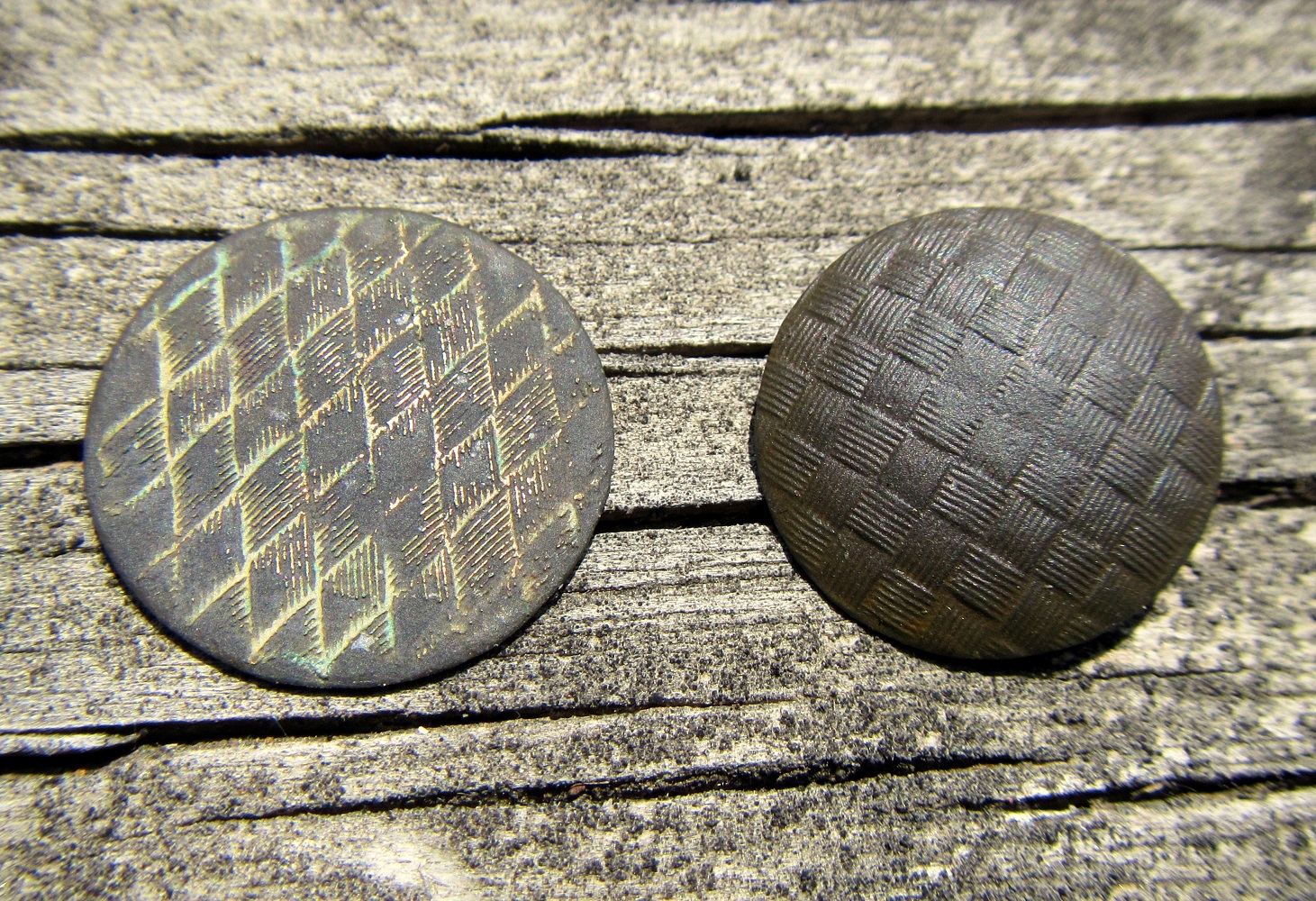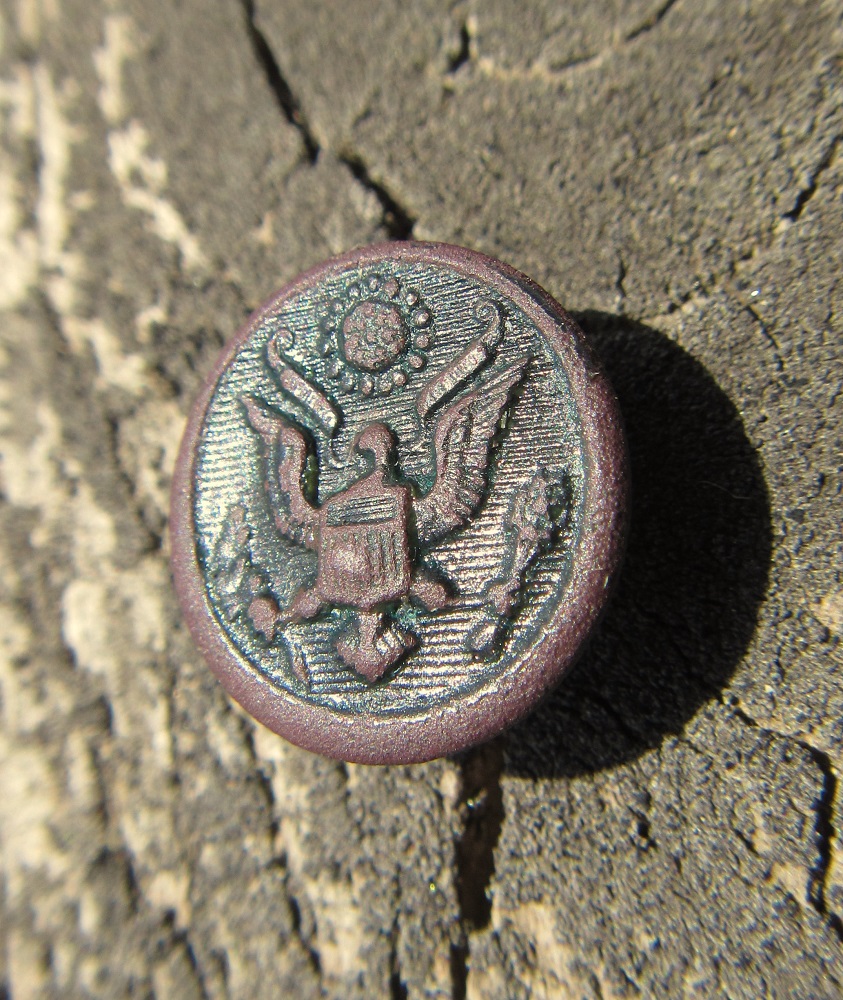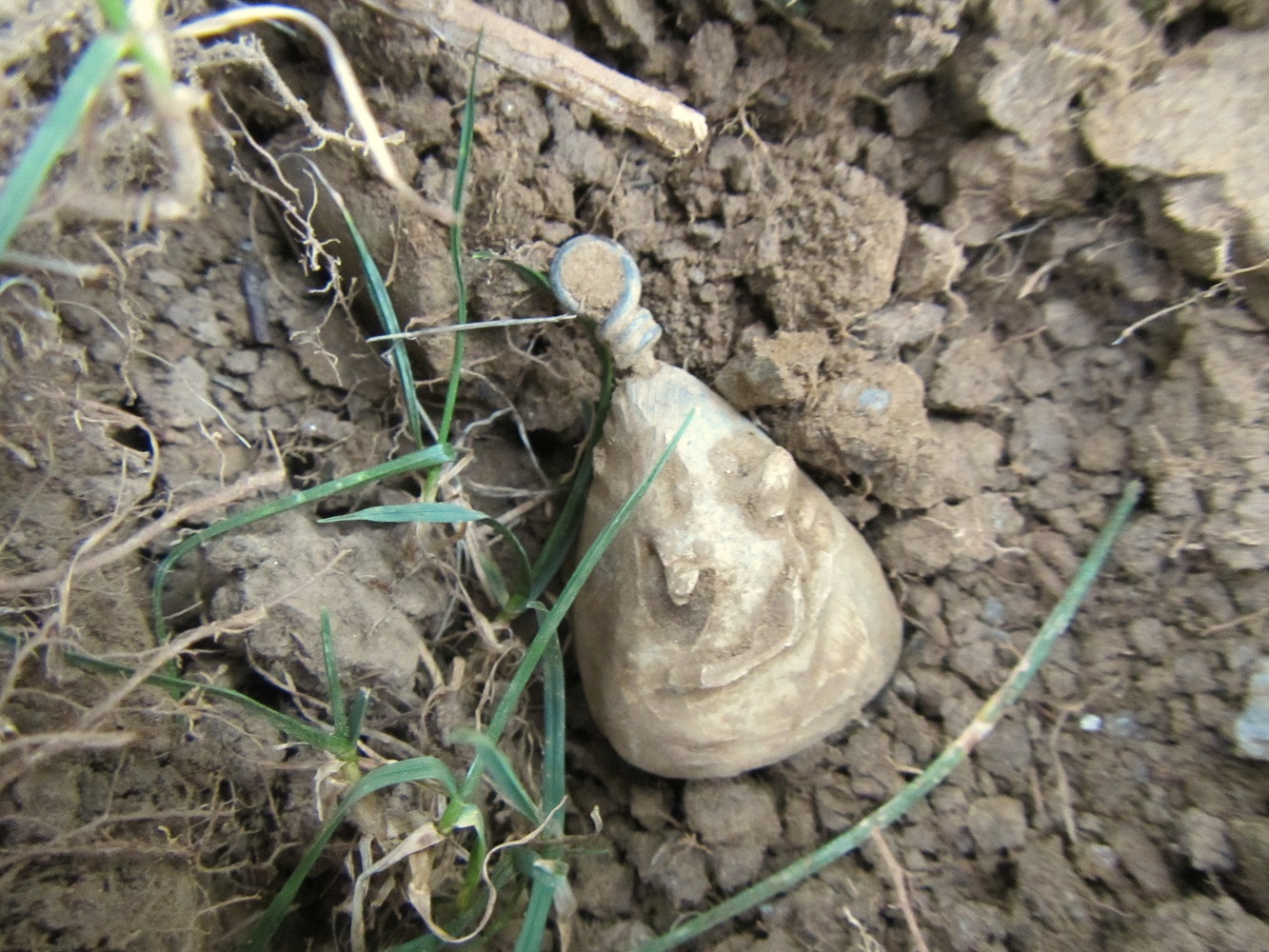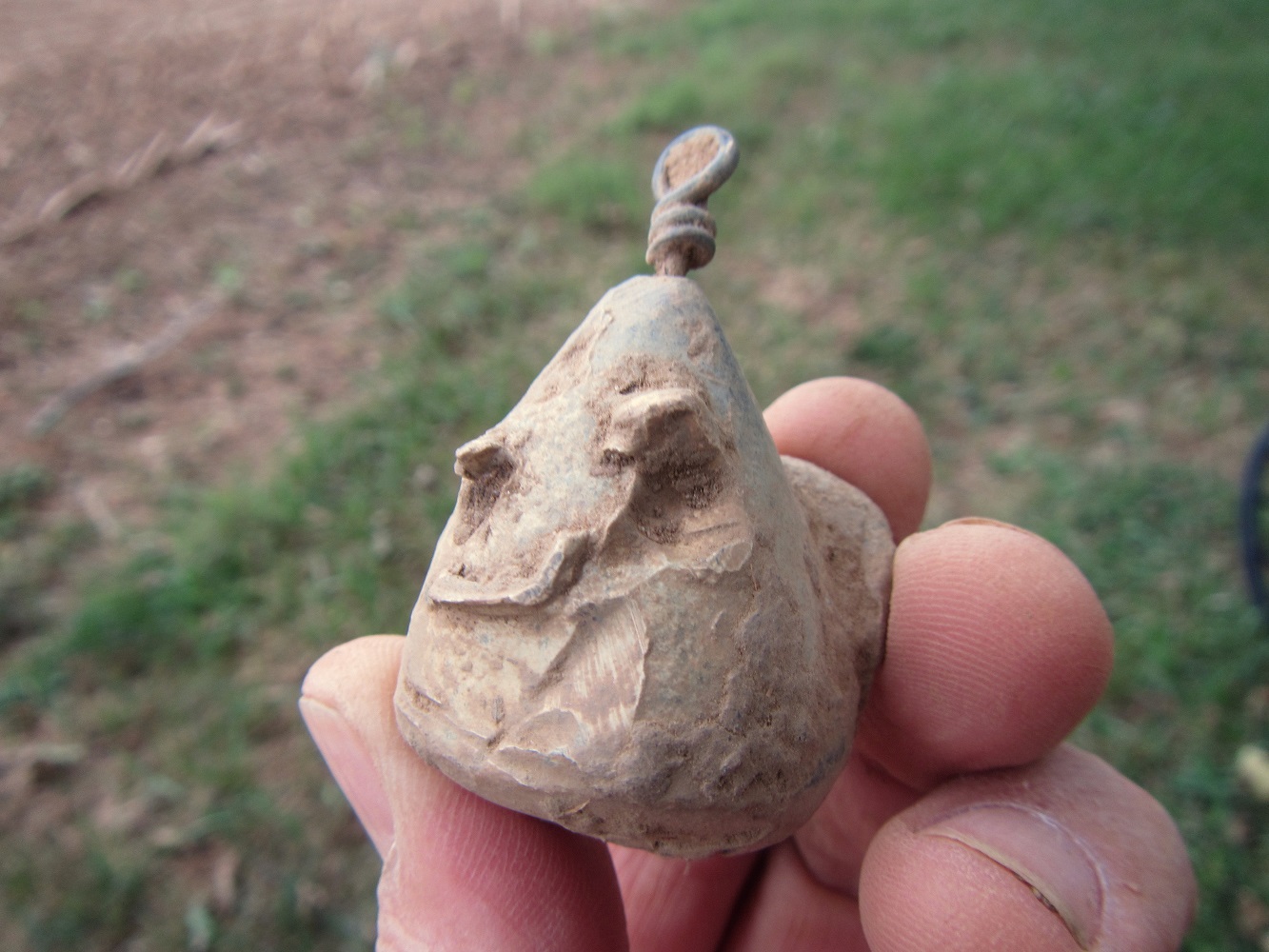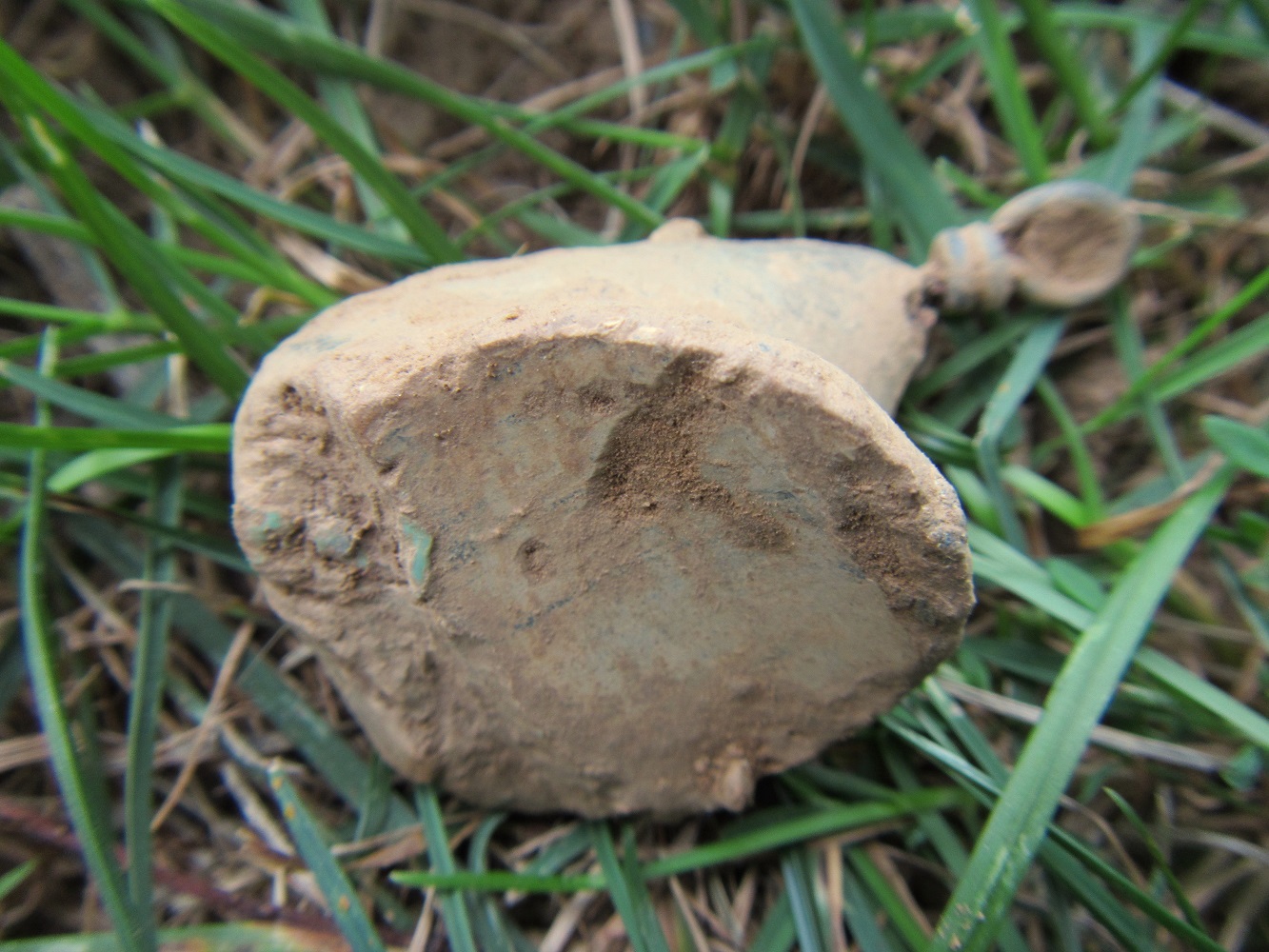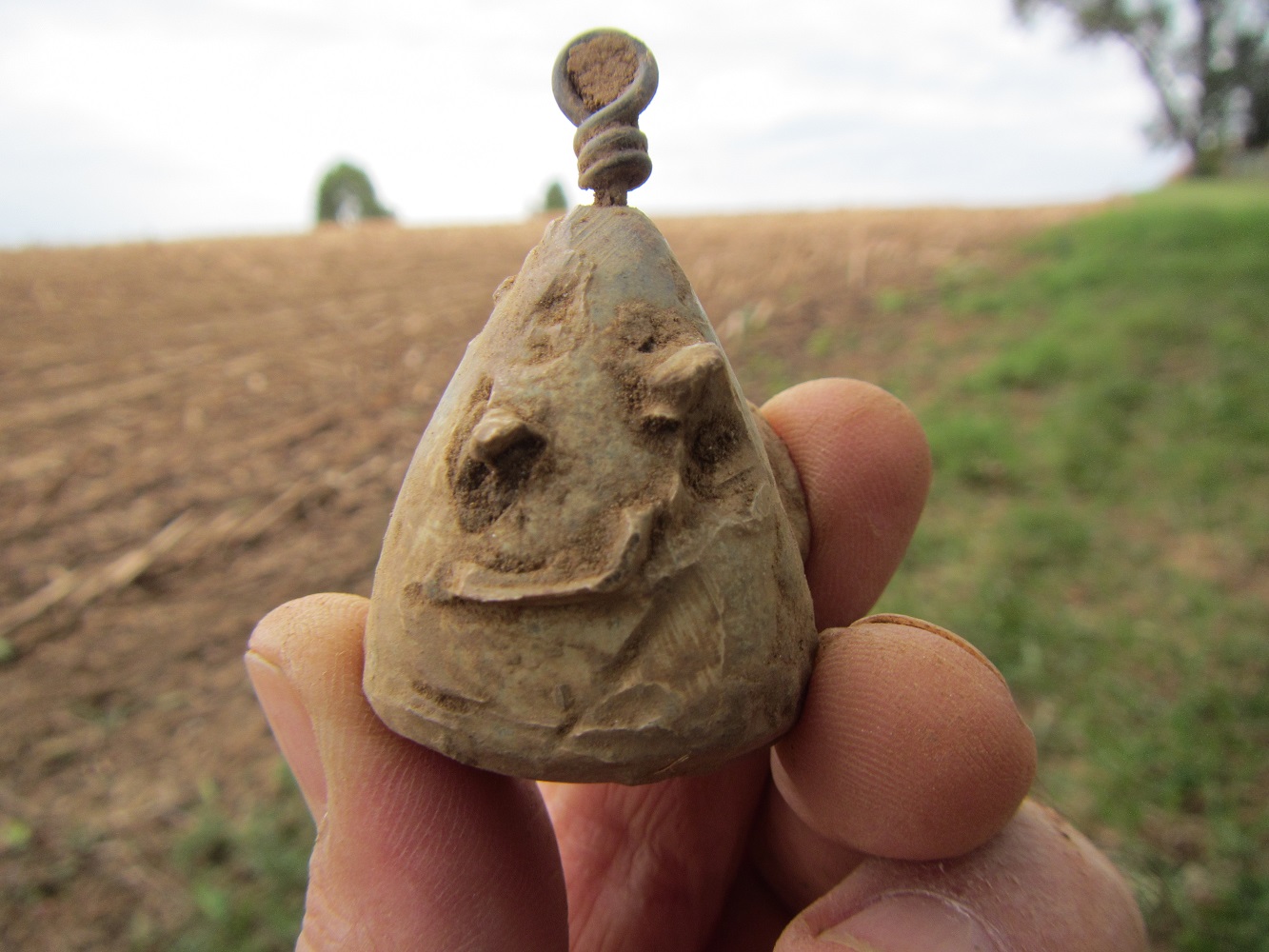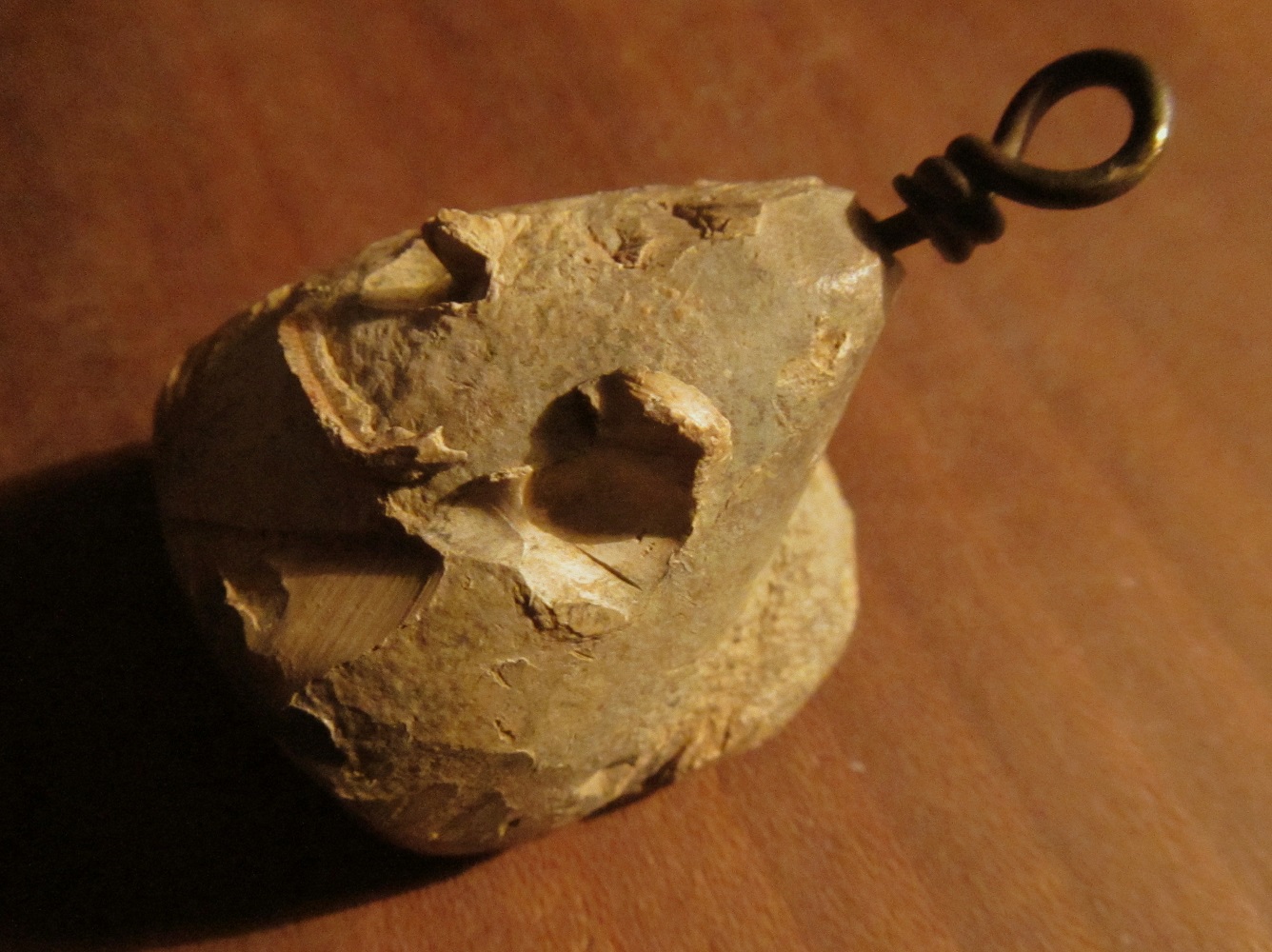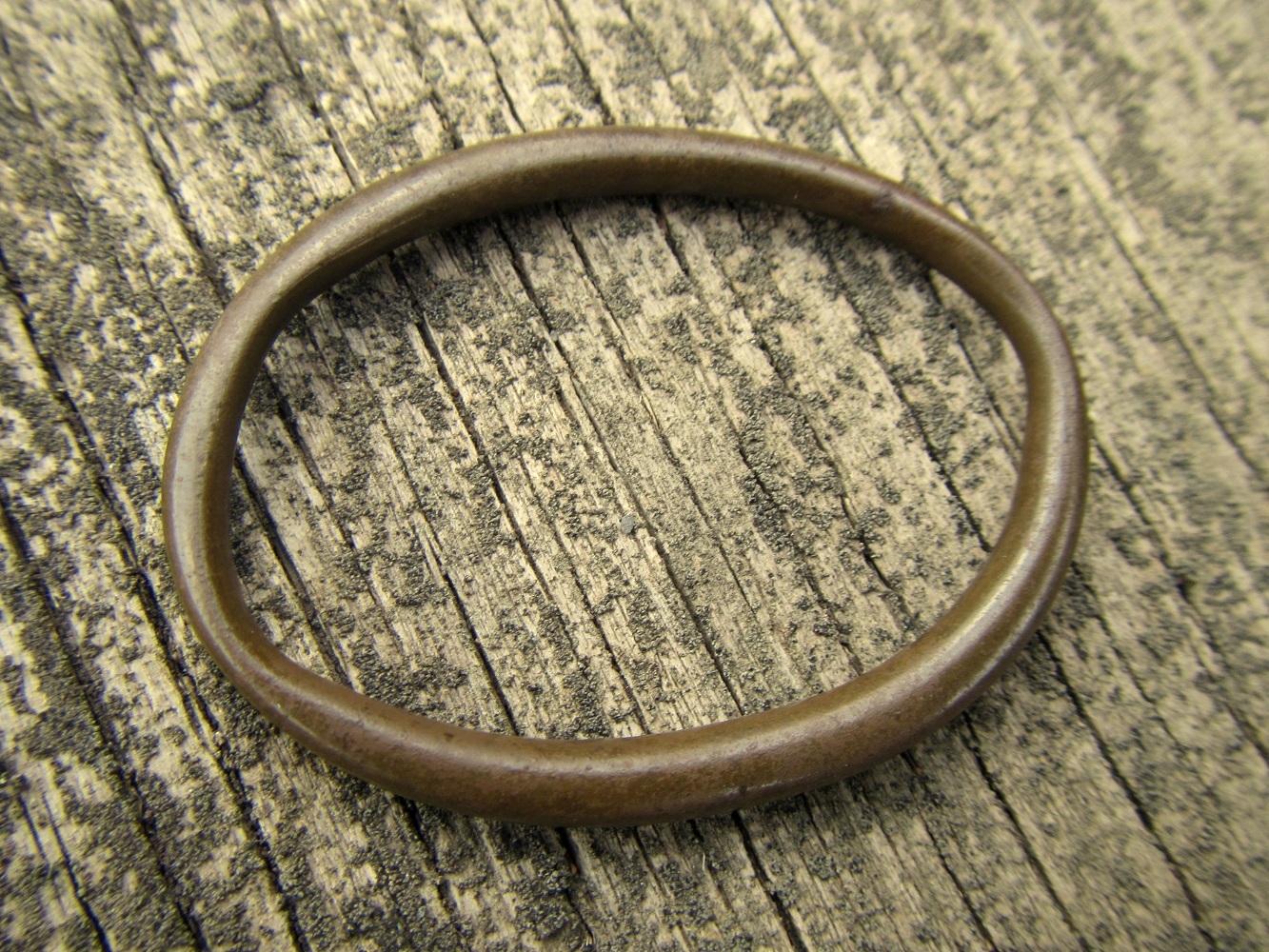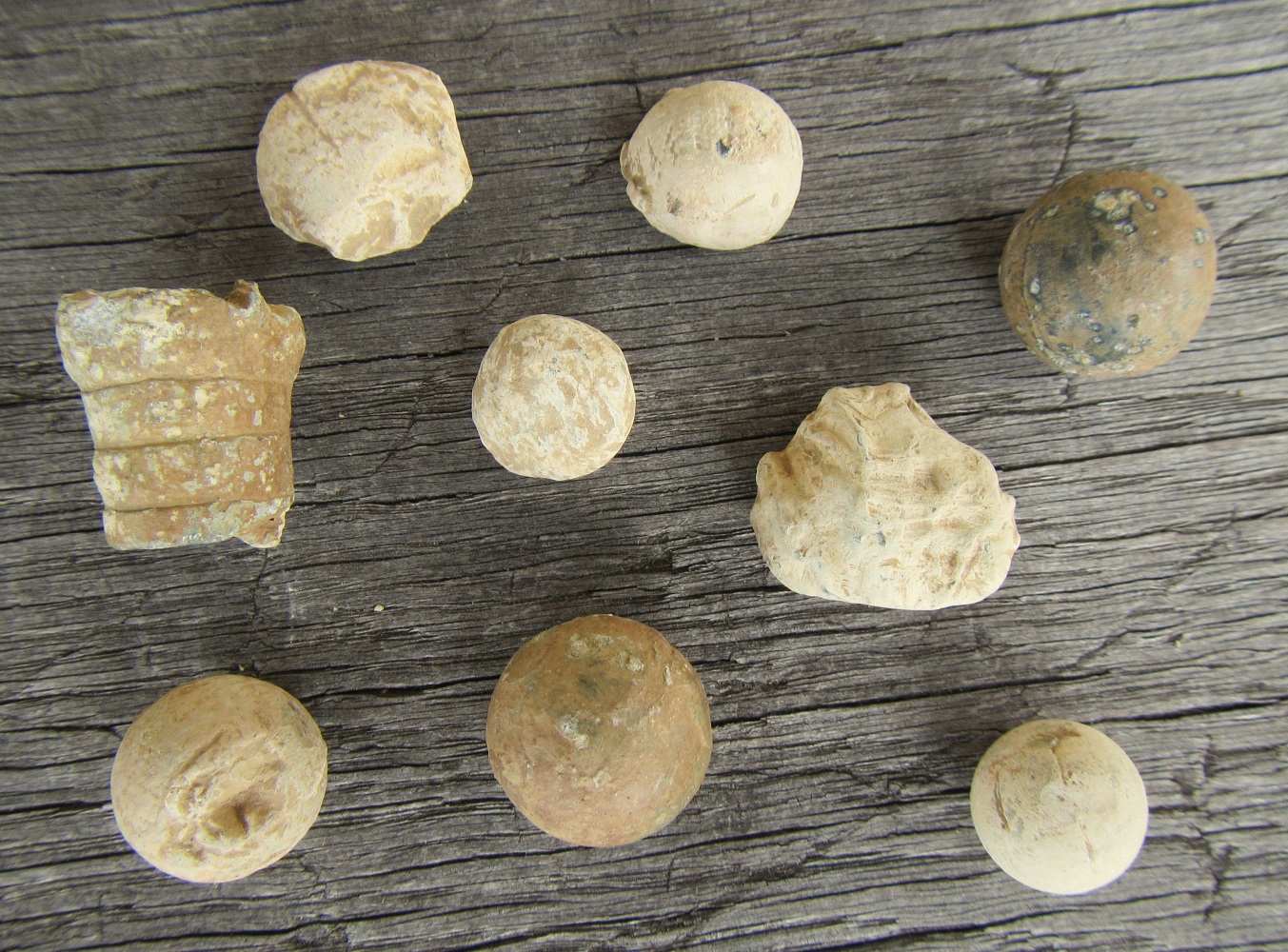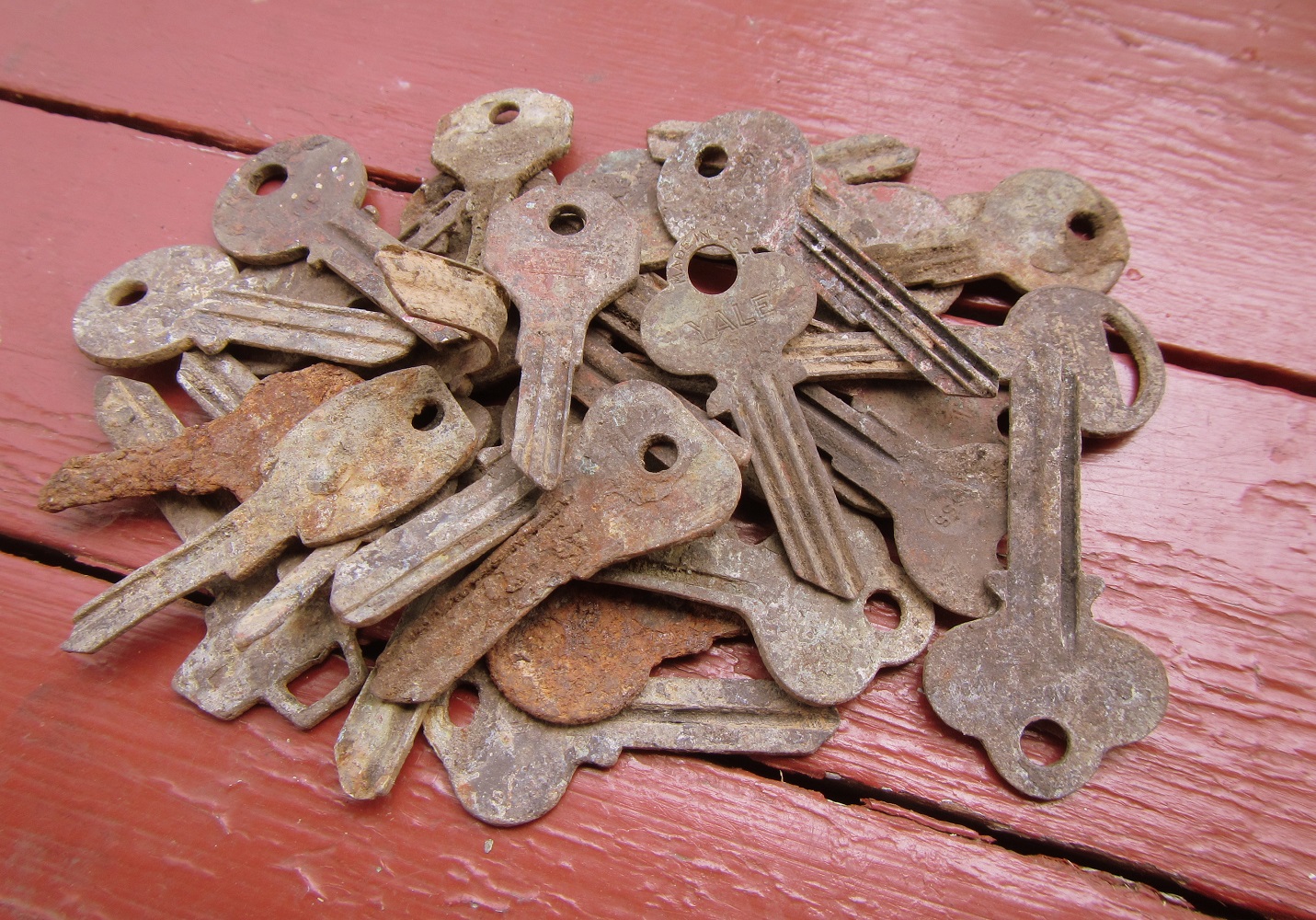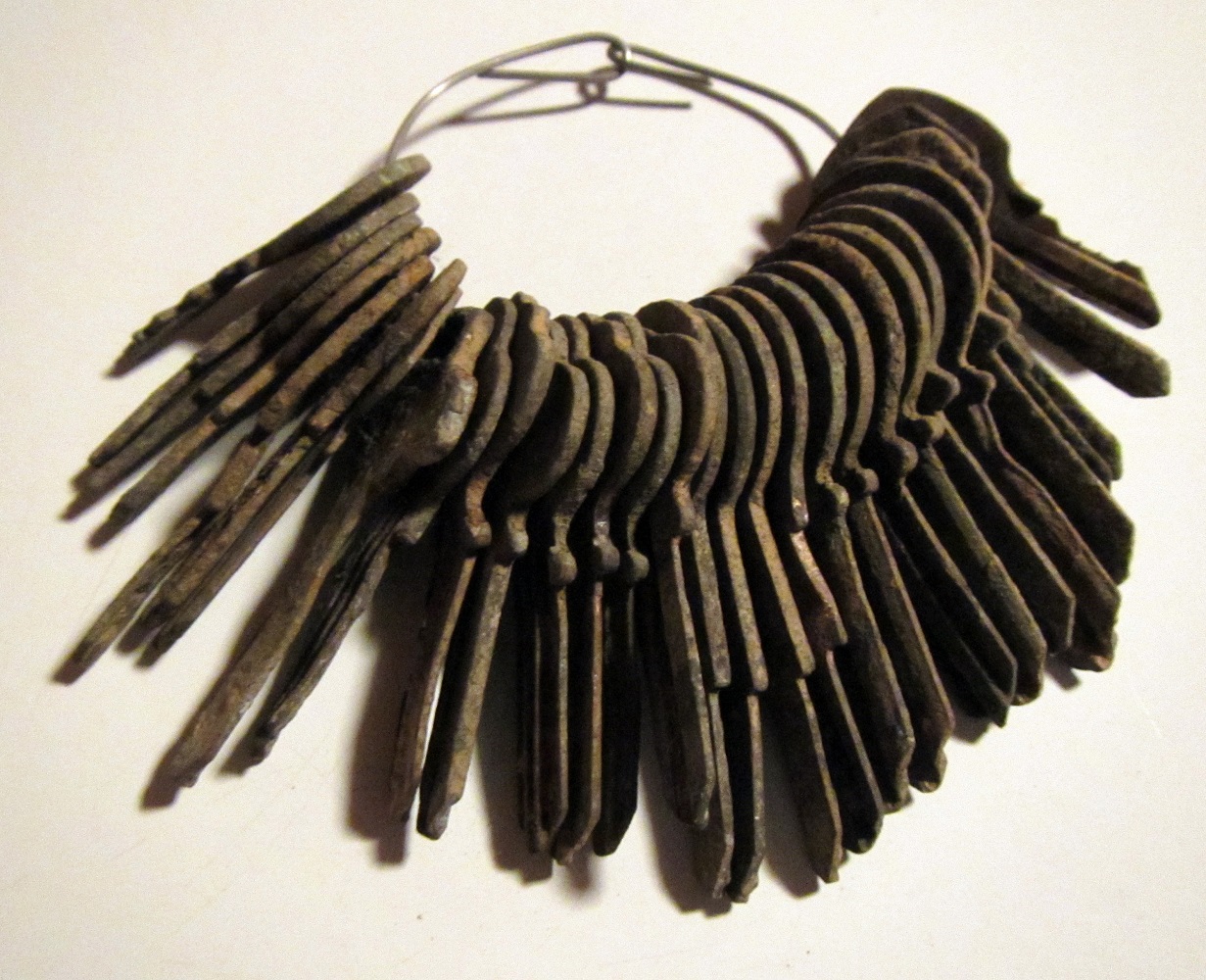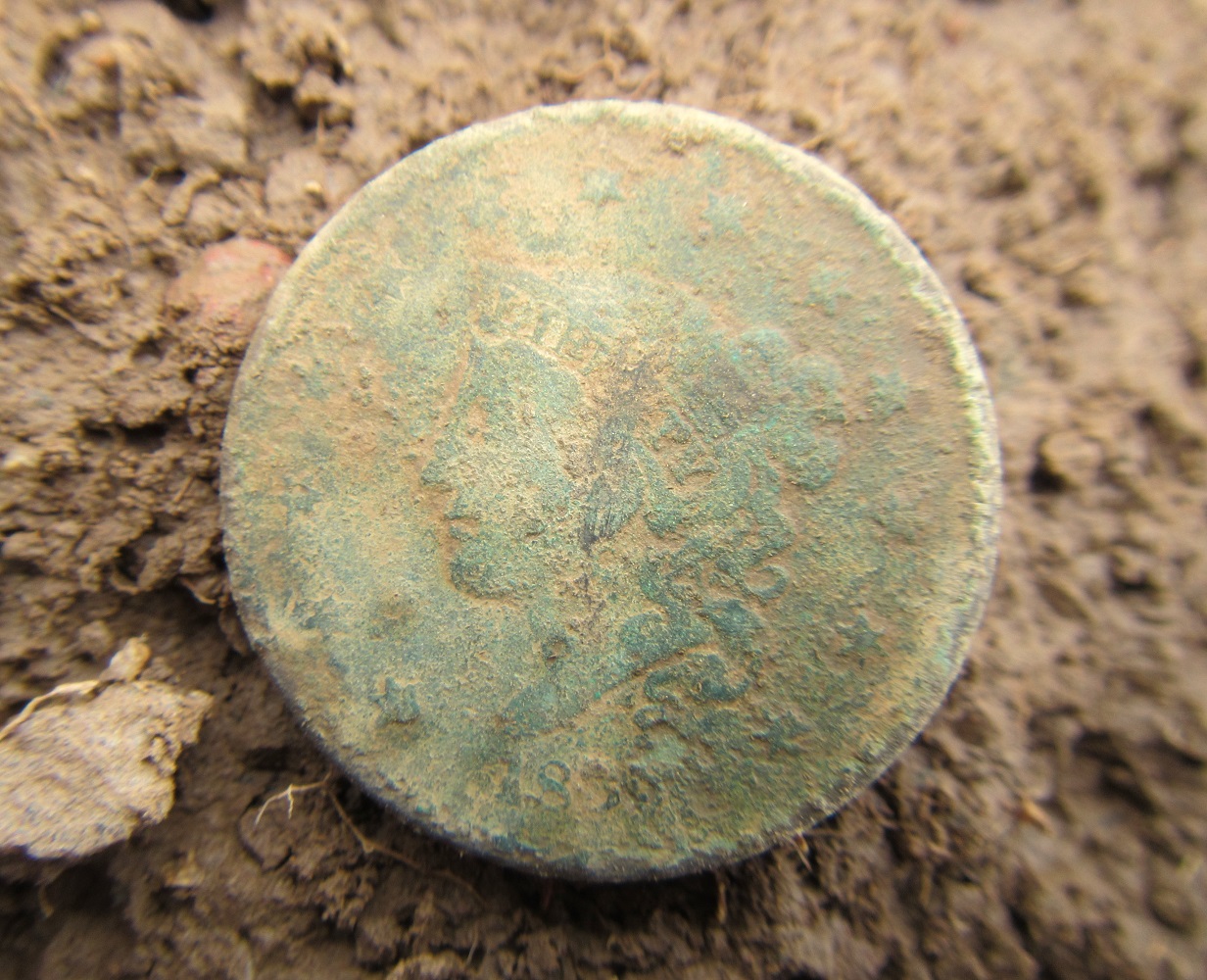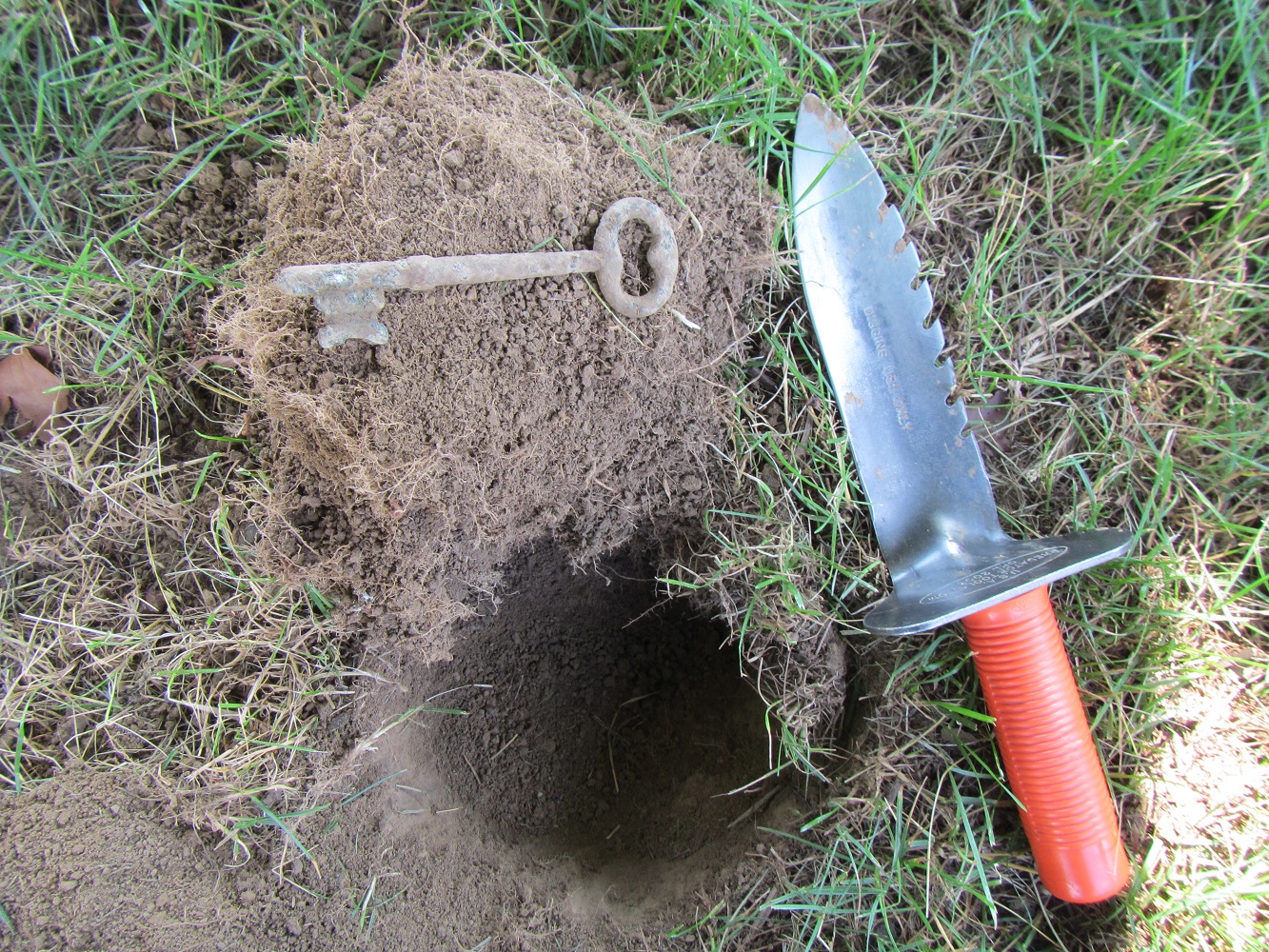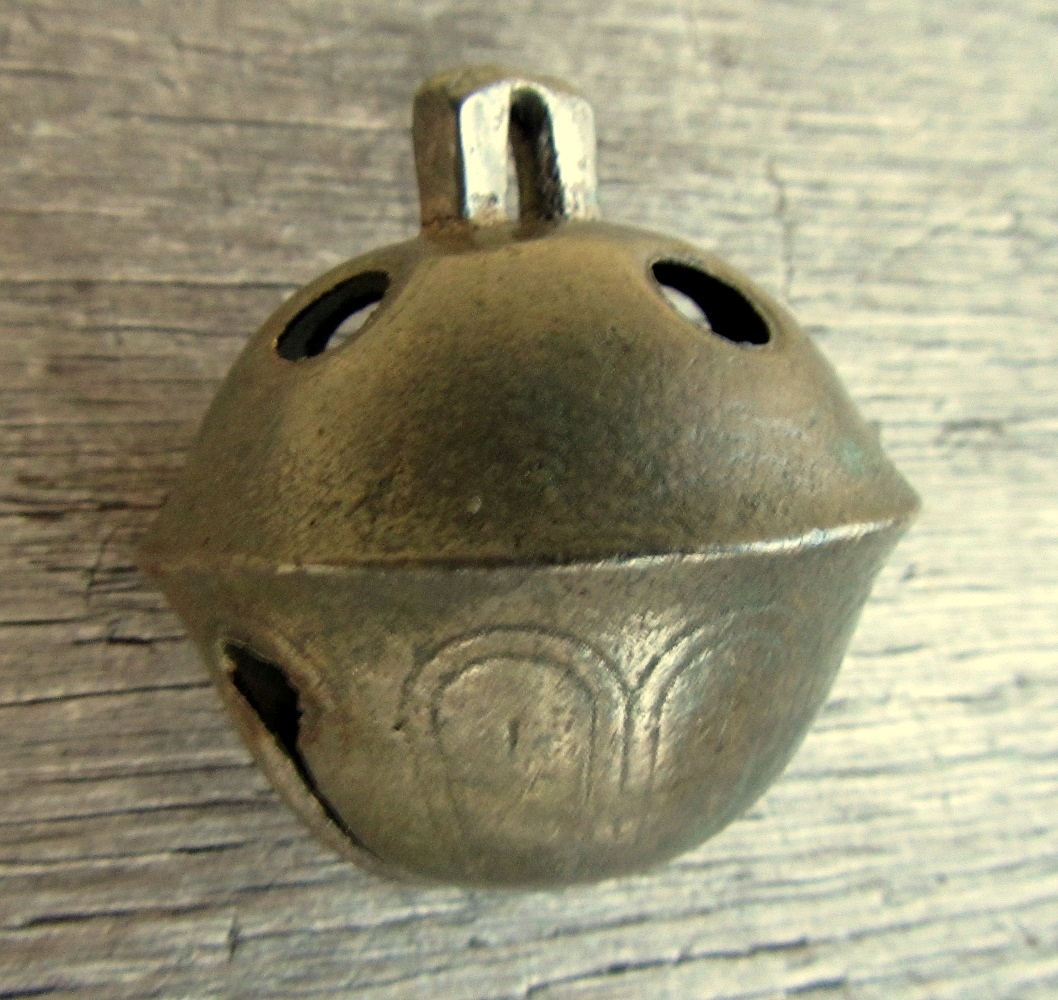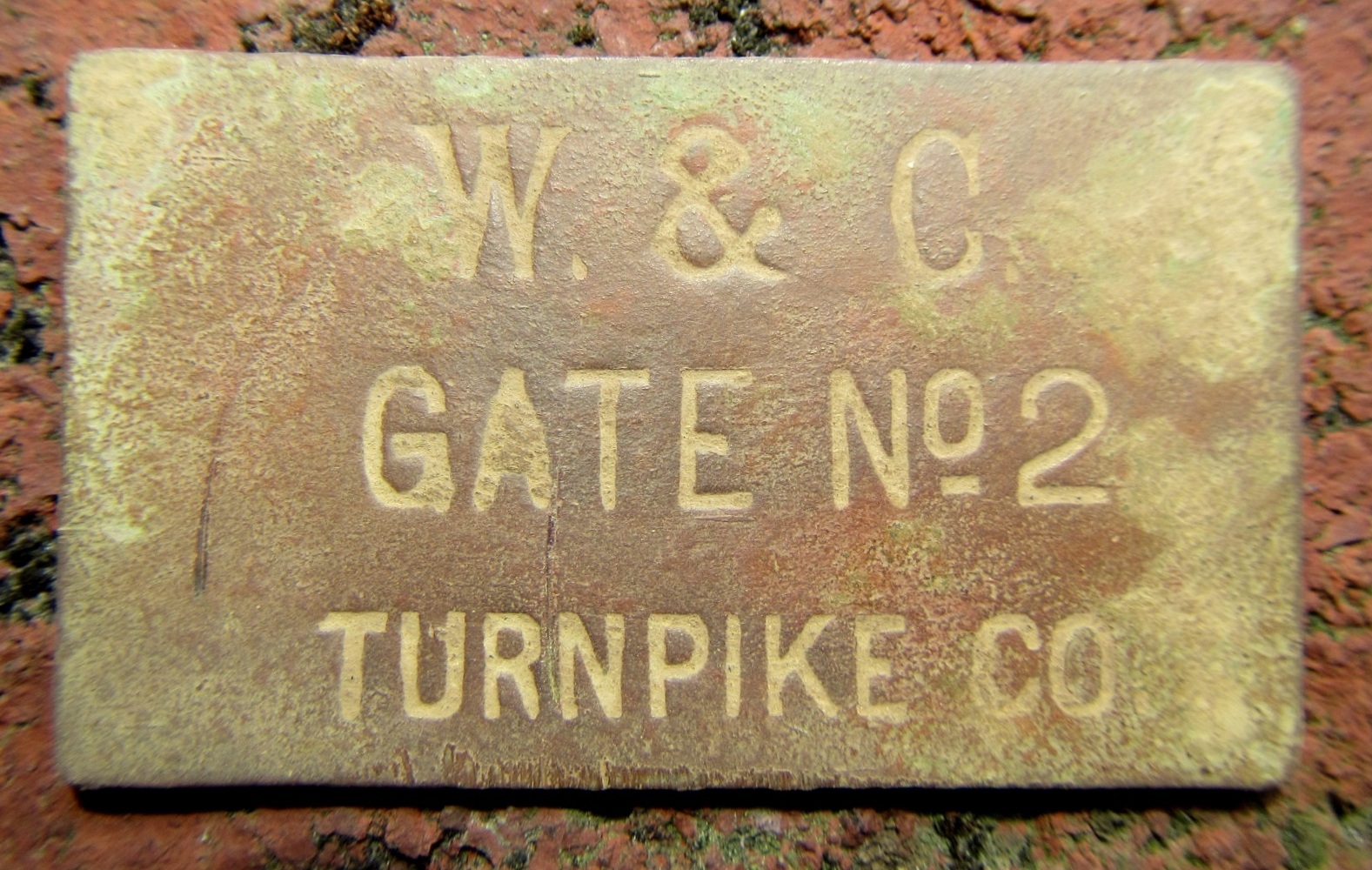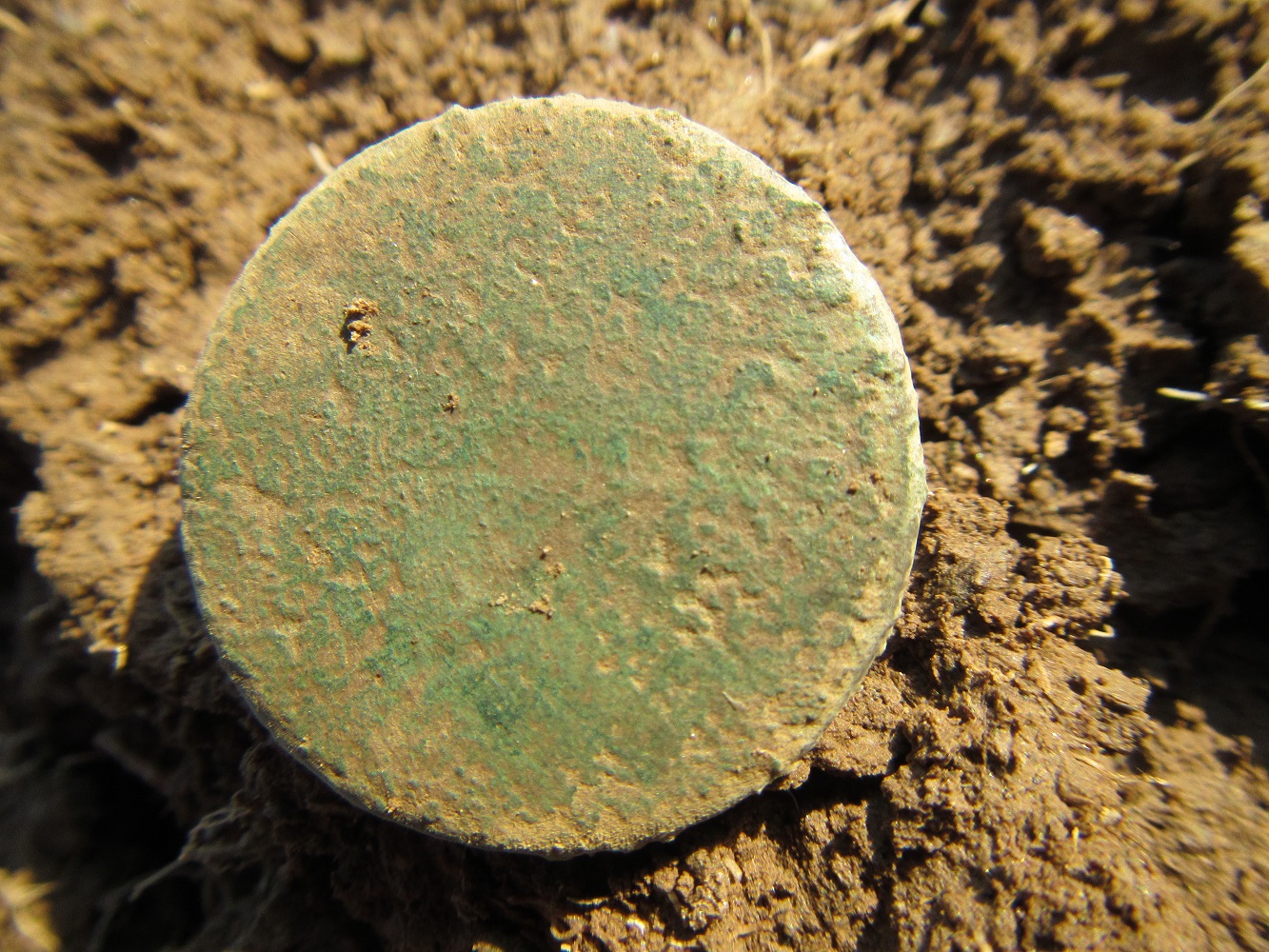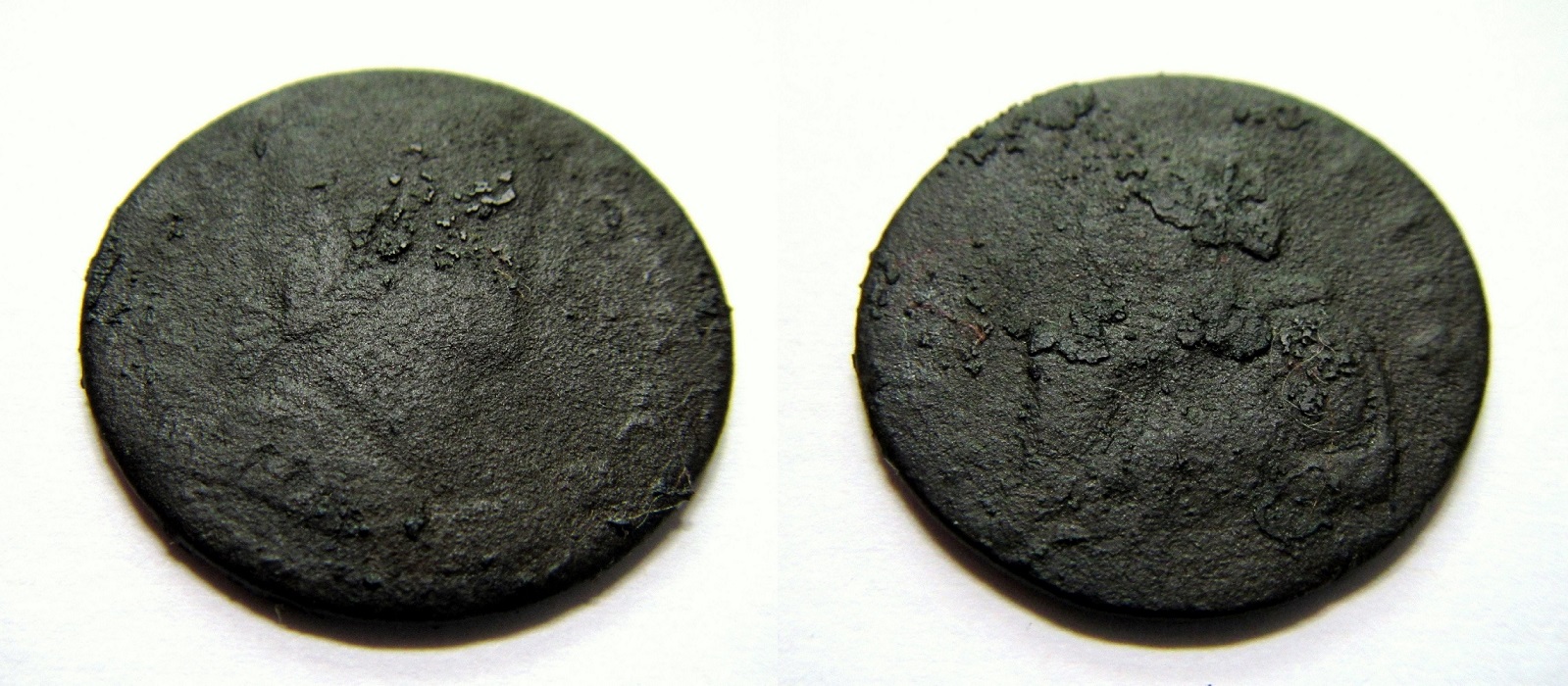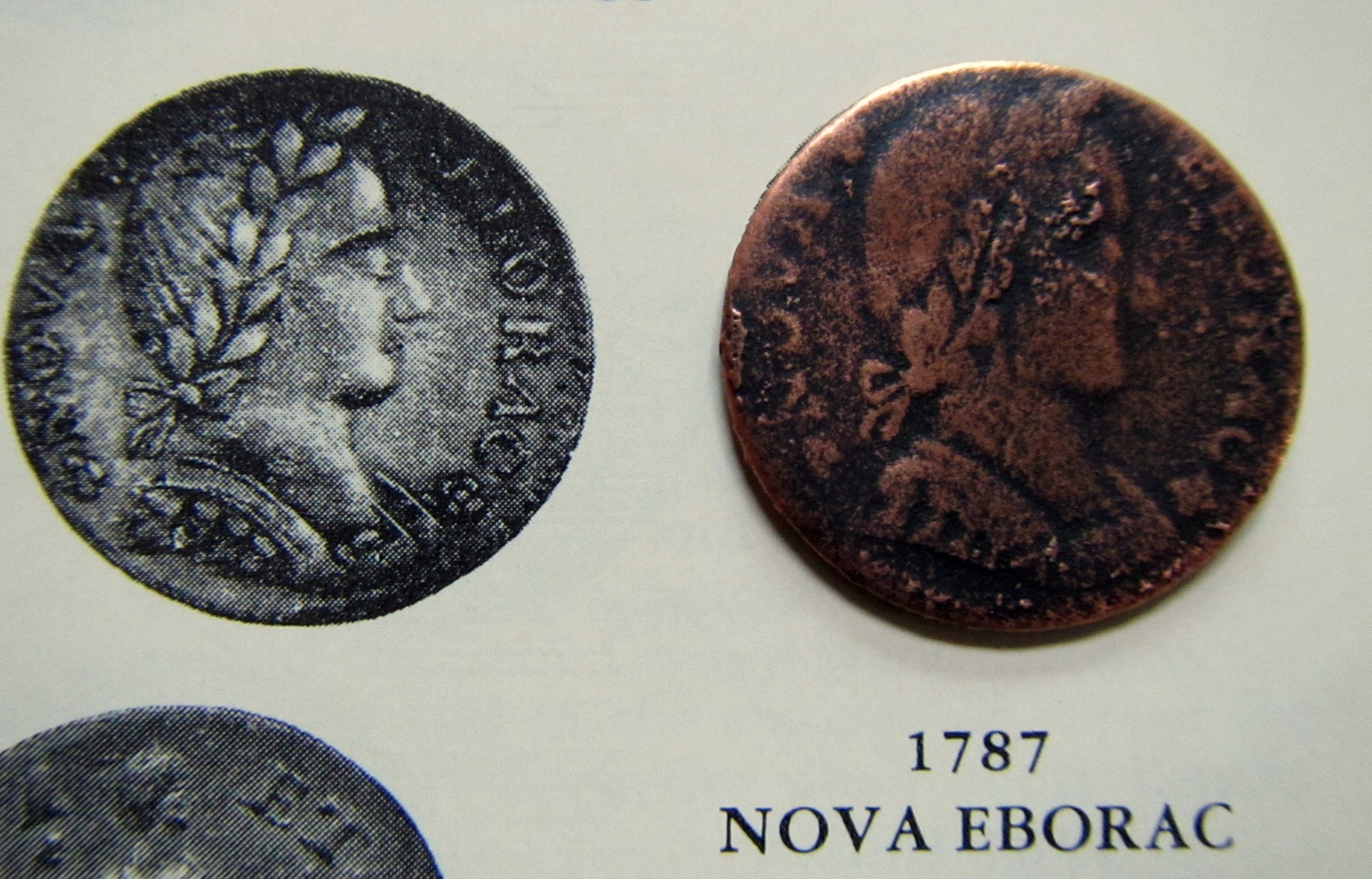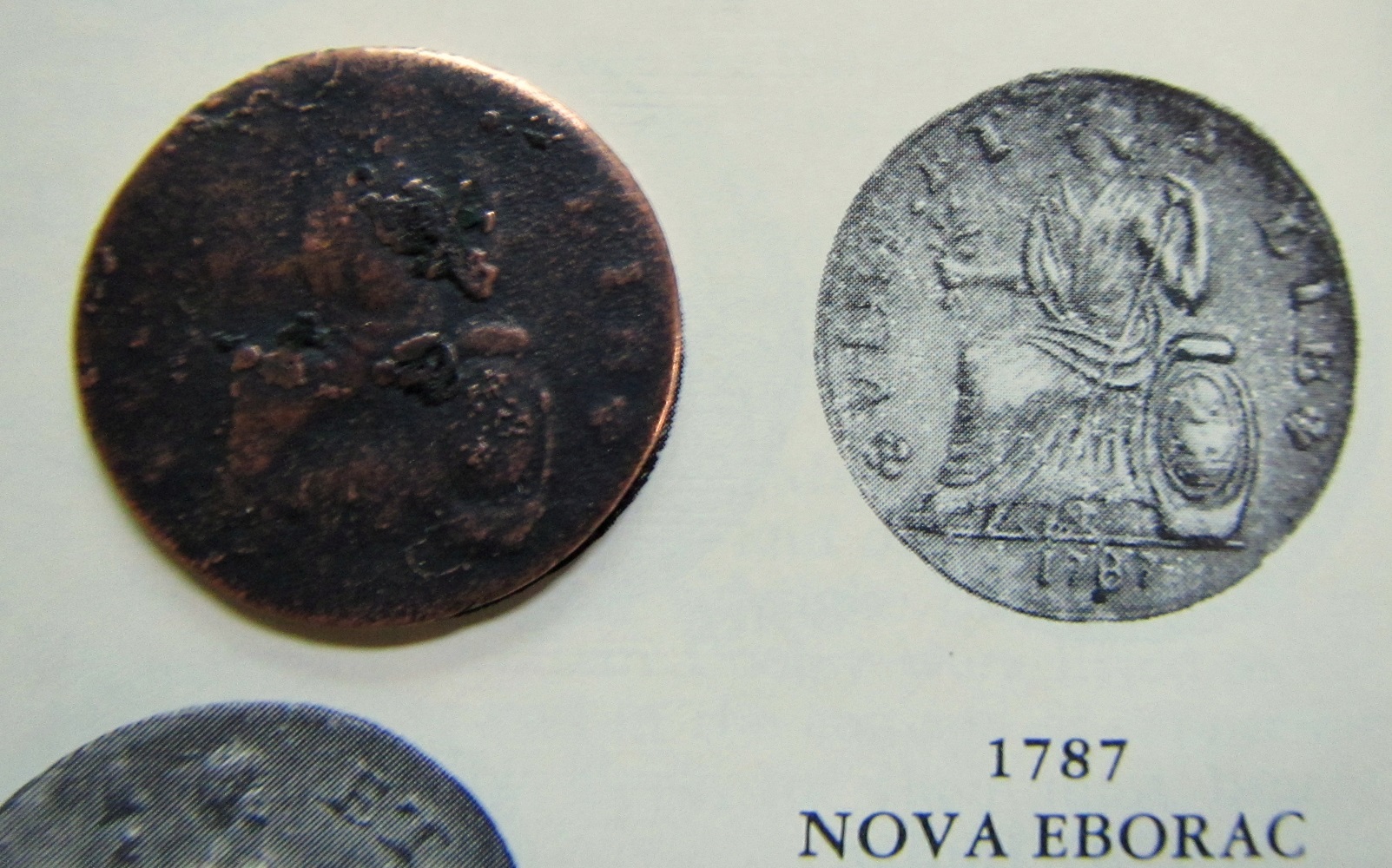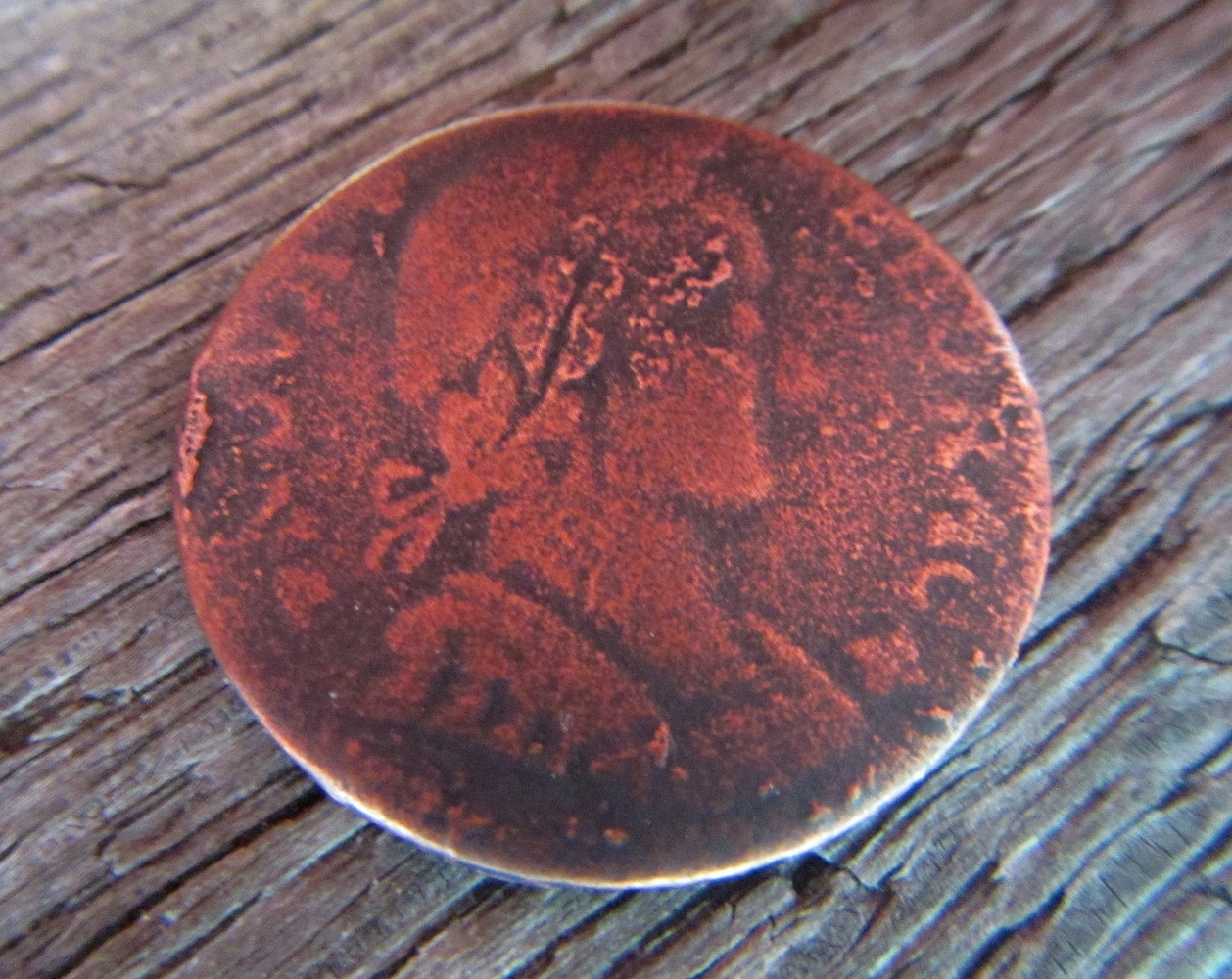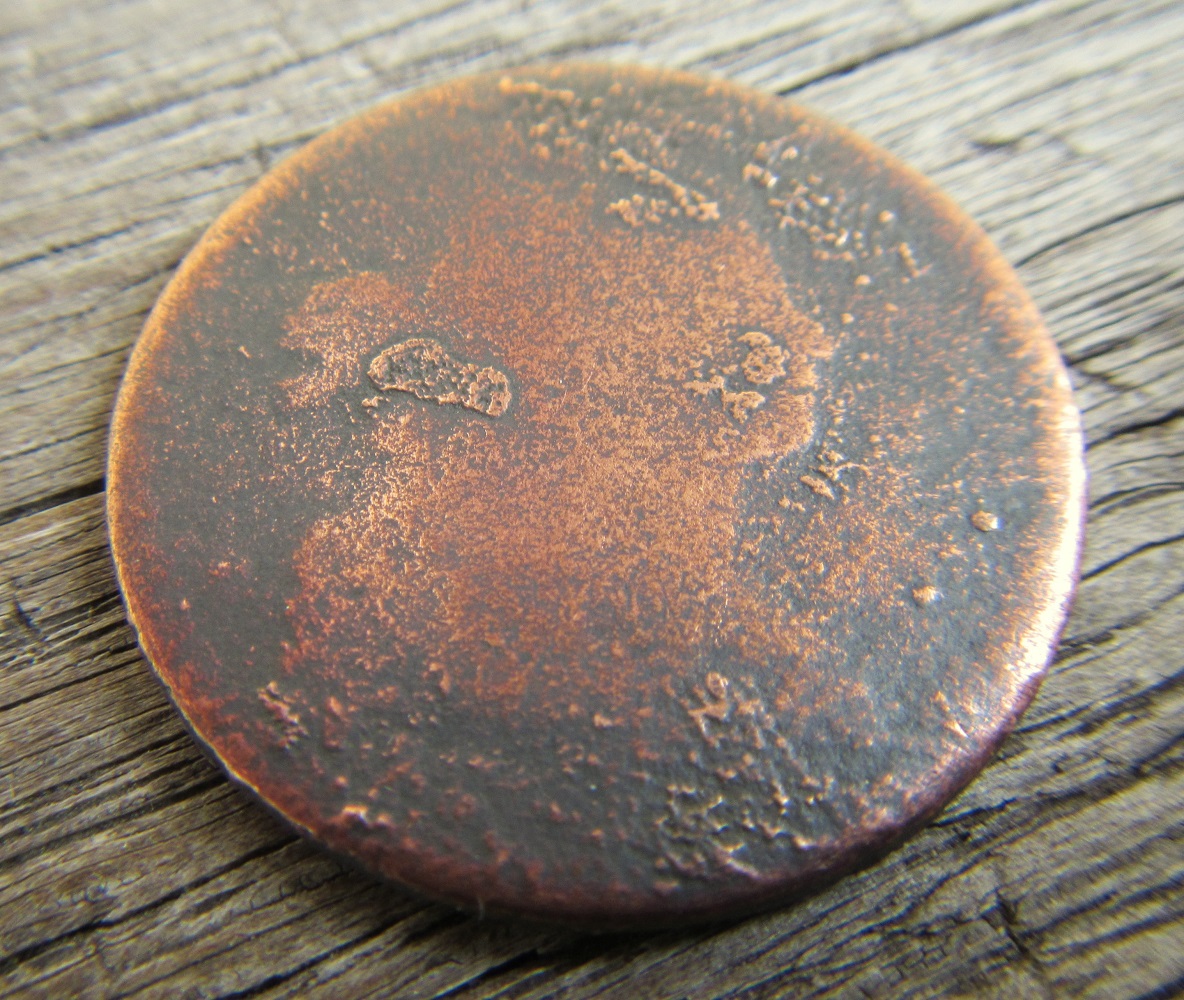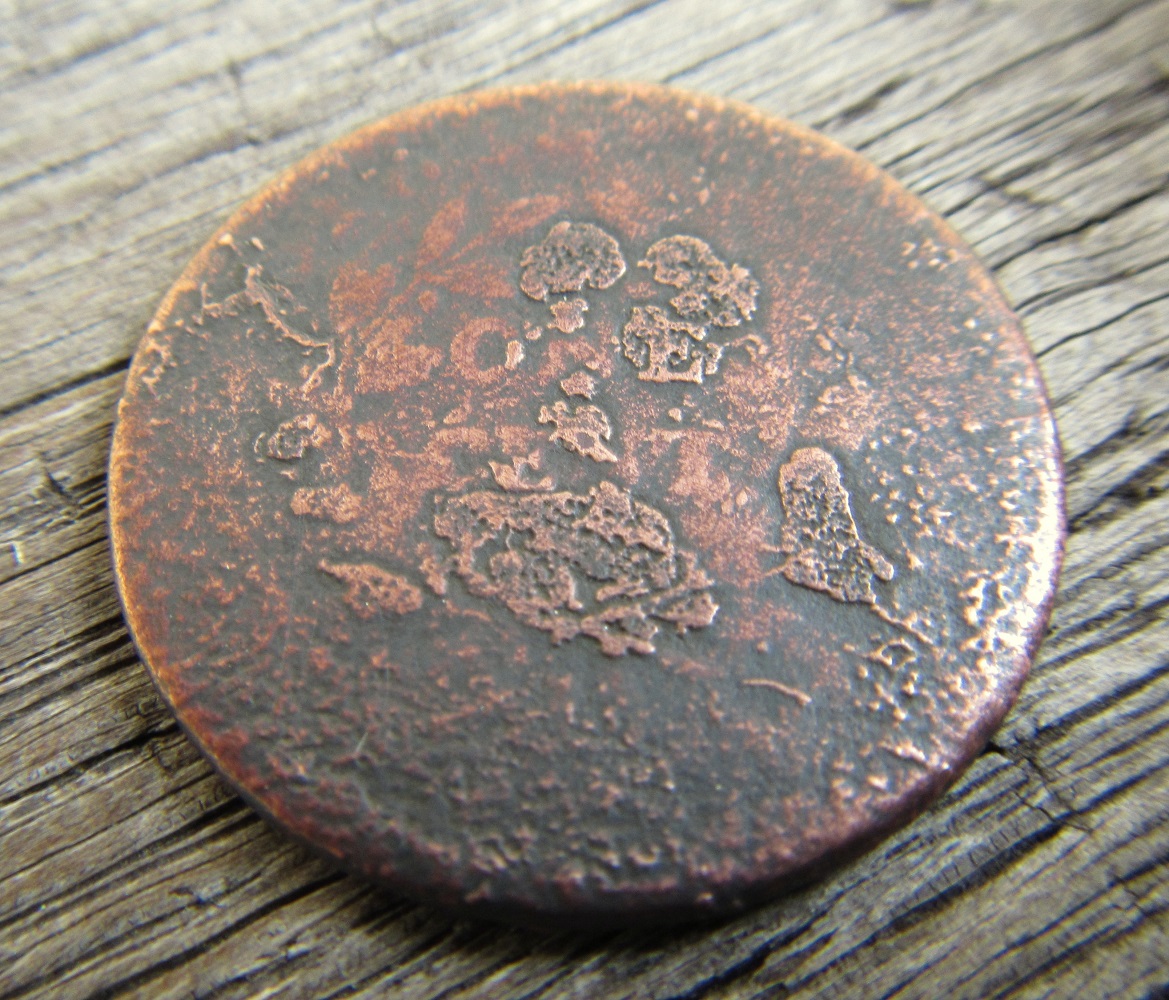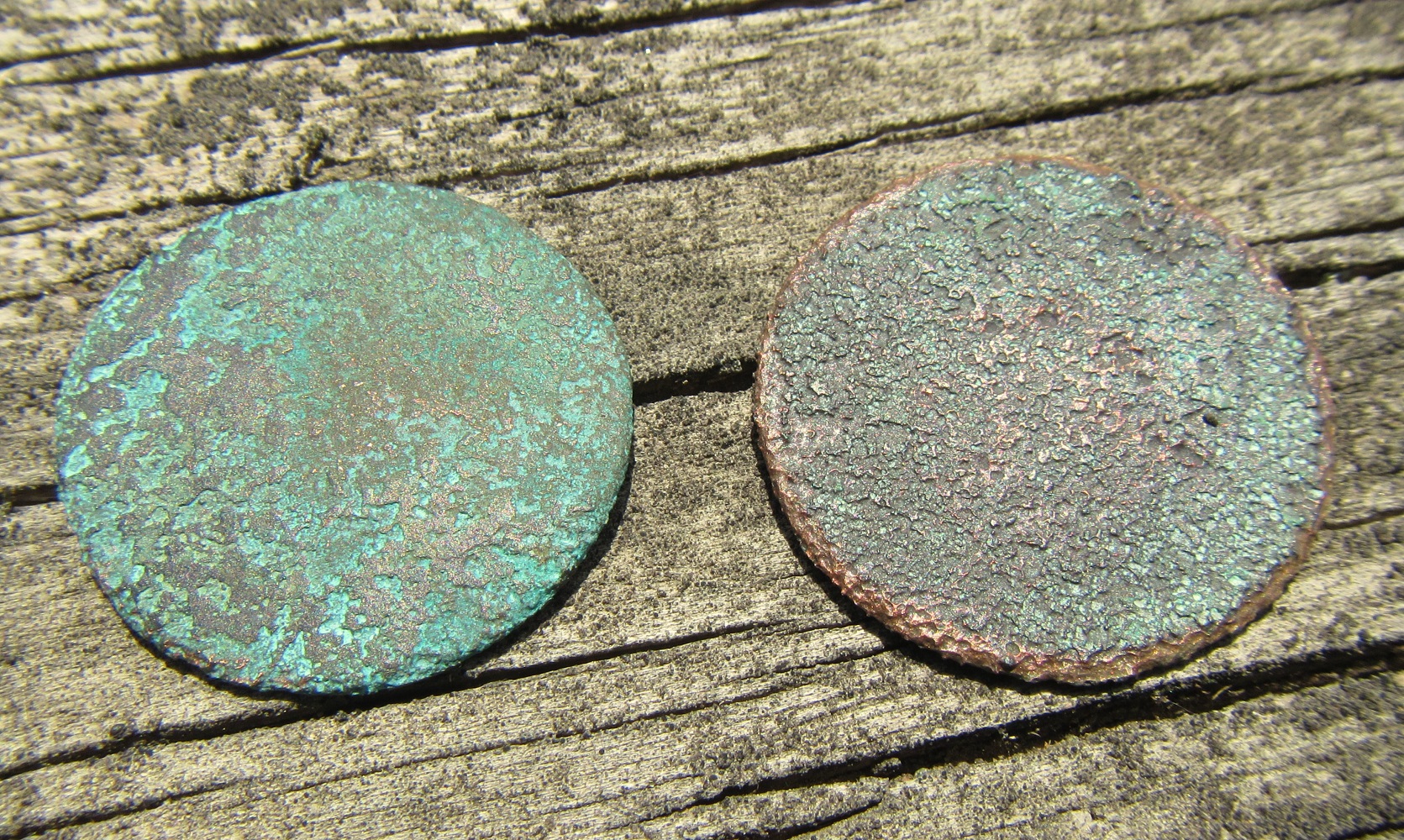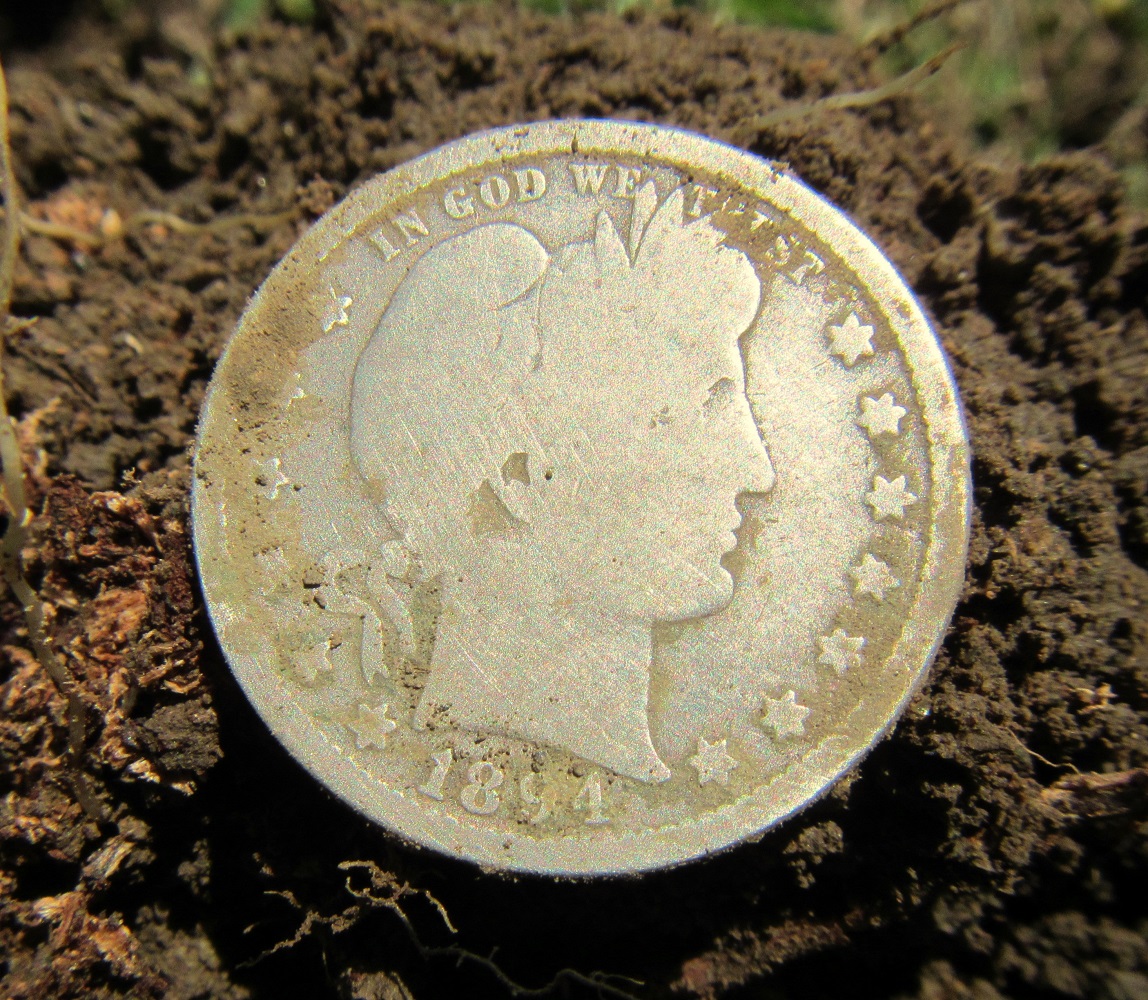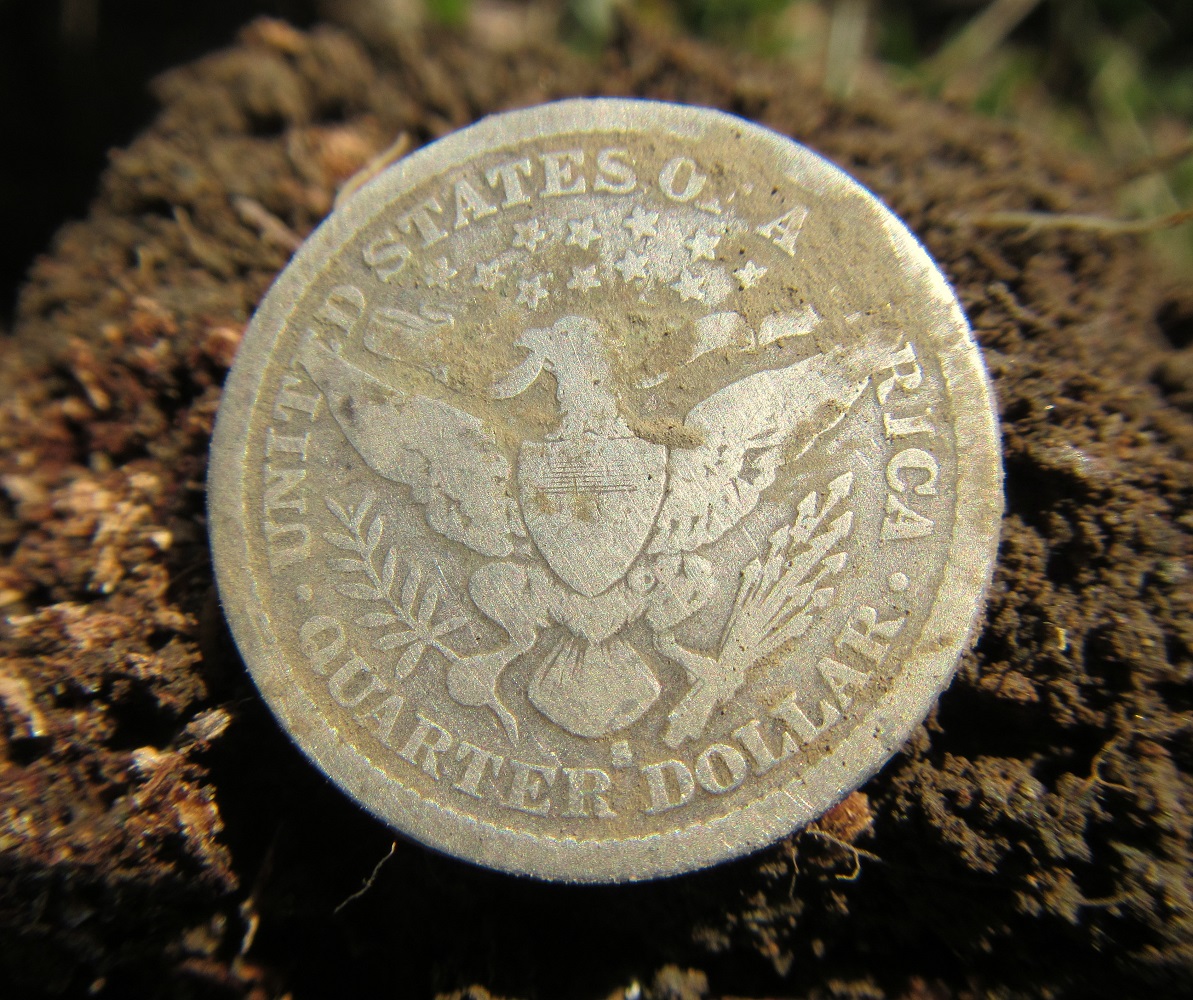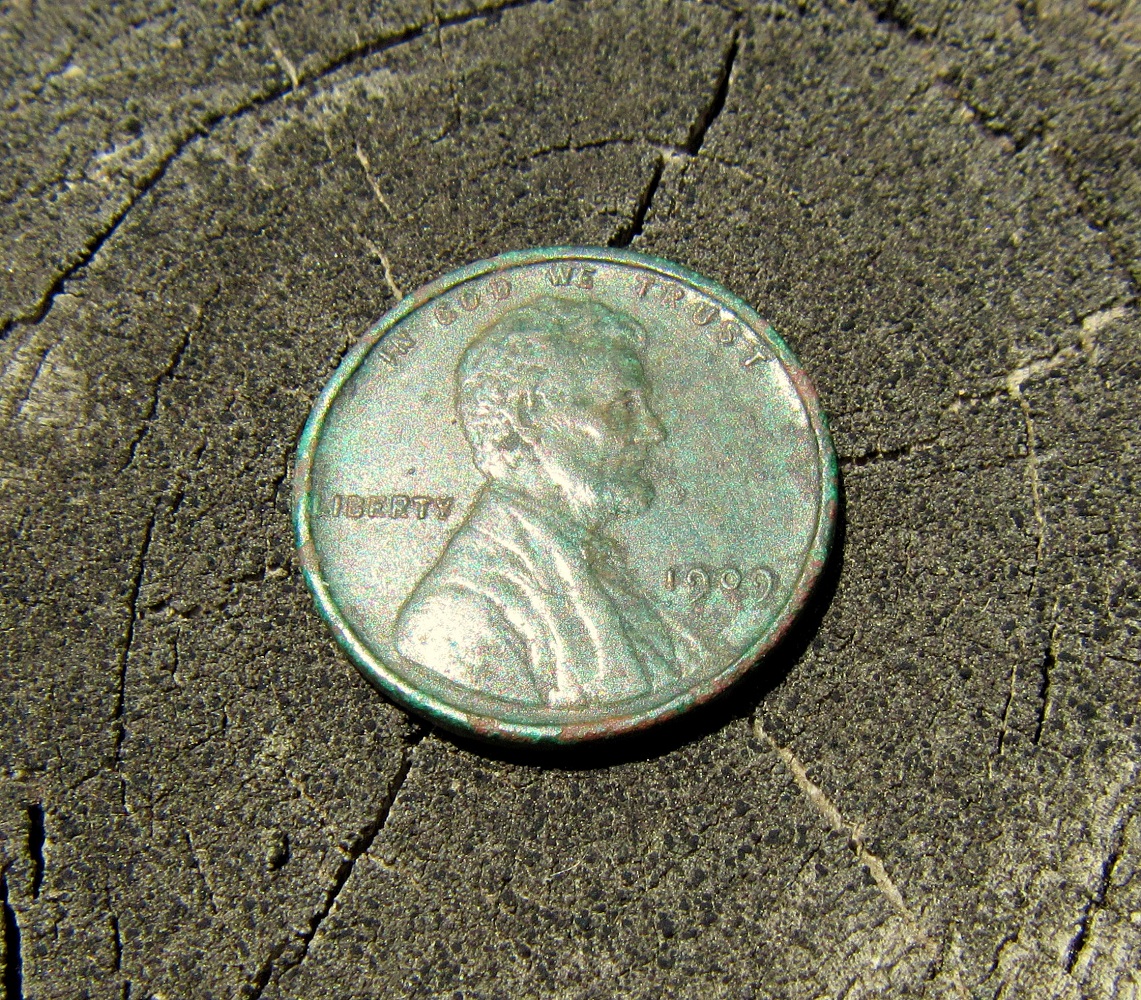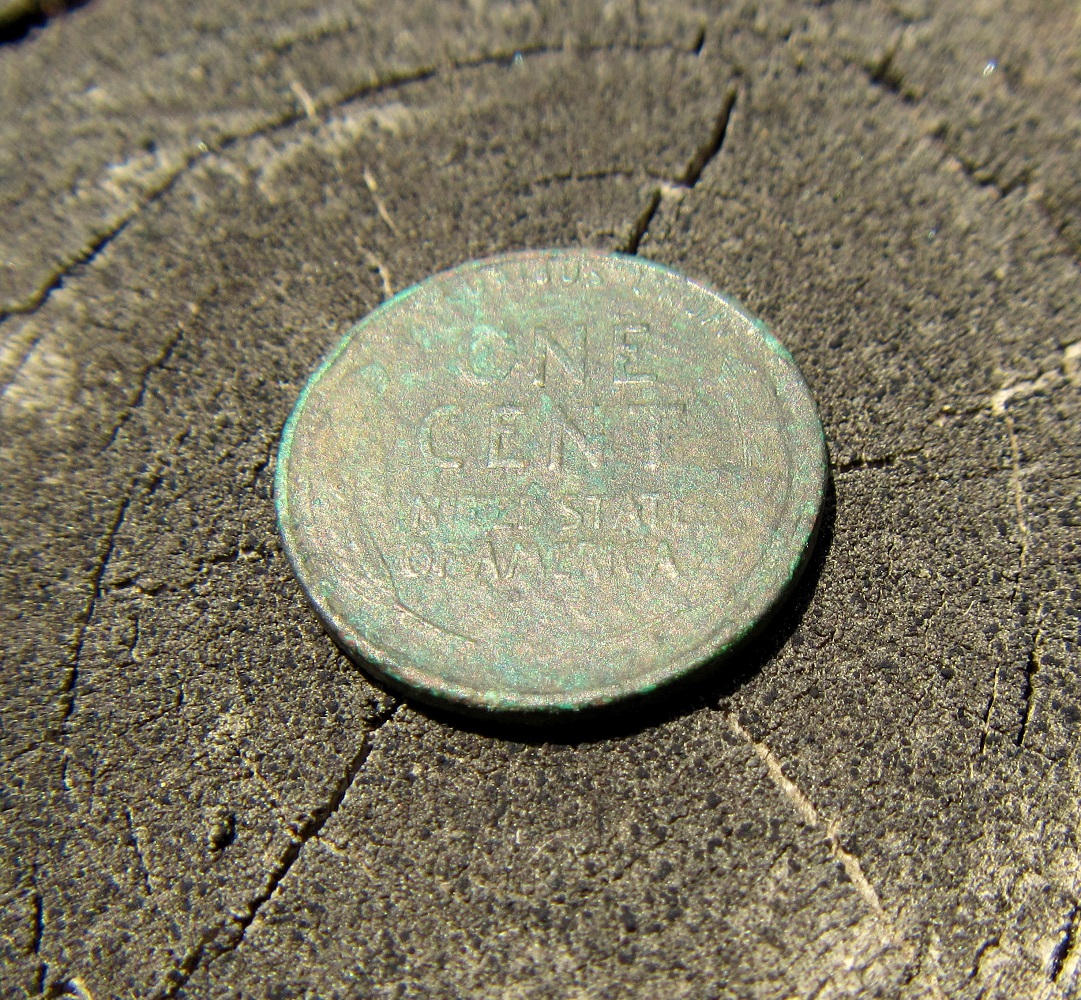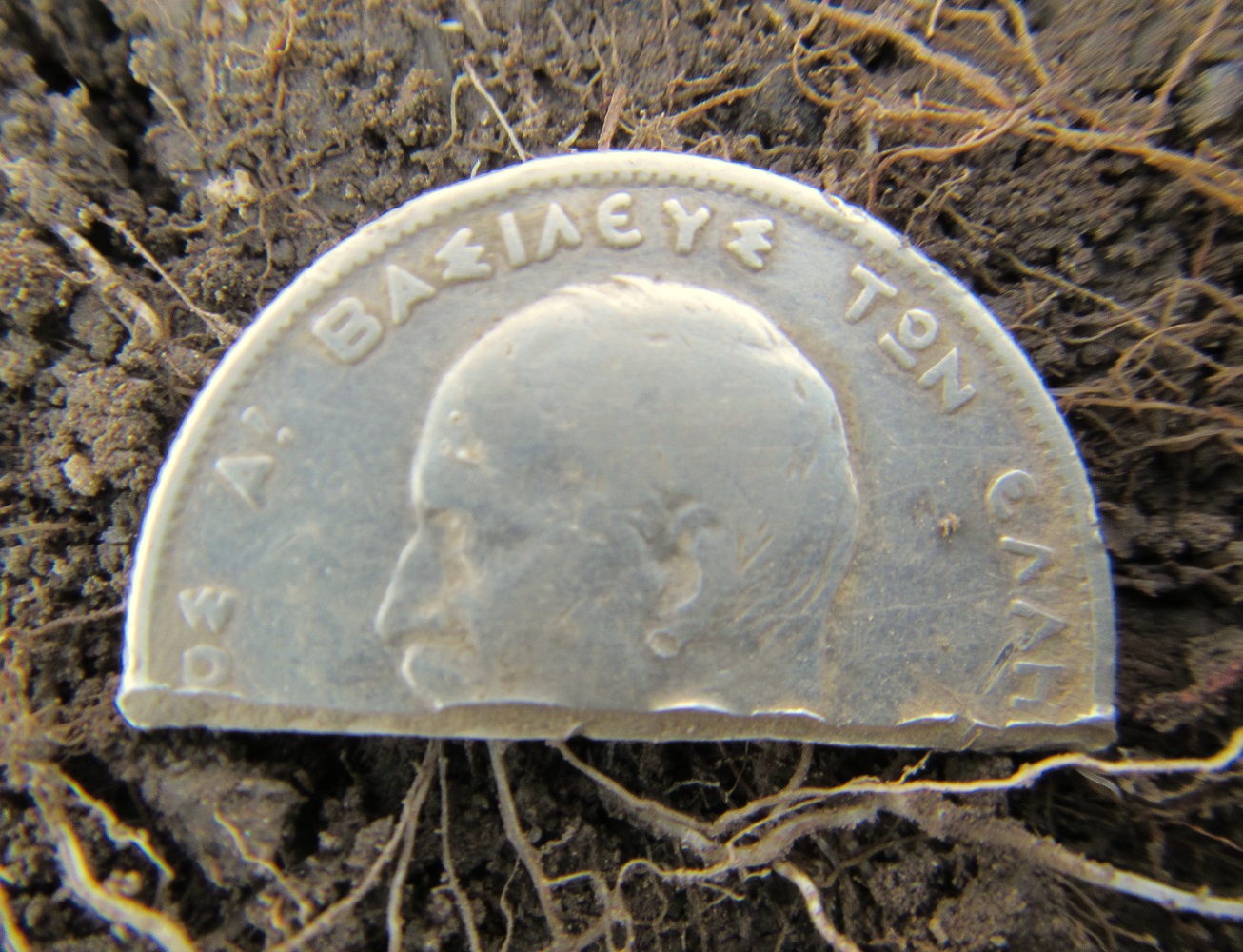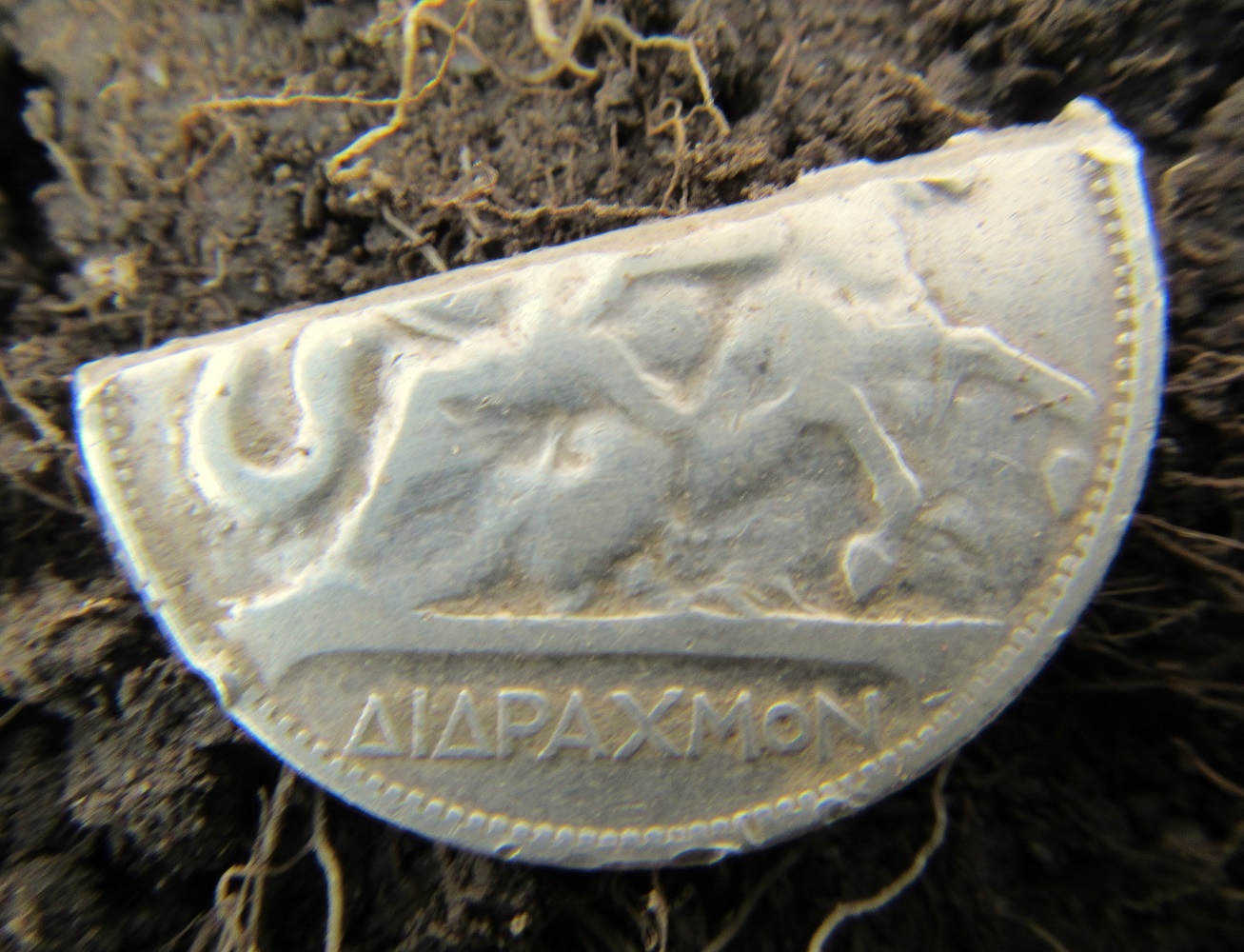Camouflage
One of my favorite short stories is August Heat by W. F. Harvey, published in 1910. Although not yet August, summer has quite suddenly come on full and has baked the ground dry, making it as difficult to cut as when it’s frozen. Neatly cut sod will crumble when replaced, so I wait until after it rains before going about asking detecting permissions. Then I can detect a nice yard or property neatly and properly, without leaving a trace or killing grass. Don’t let anyone kid you, metal detecting’s a tough enough gig when it’s cool and the ground moist. It’s hard work in any weather, and everyday detecting finds can be almost entirely trash. Having the patience and determination for those few and far between interesting finds is exhausting, especially under a 94 degree sun with humidity. It has to be a potentially historic spot to explore to lure me out there. I’ve come to realize that metal detecting is such hard work; you’ve more than earned anything good that you find. So, while ‘the heat is stifling,’ let’s get up to date on the detecting.
So, what else was behind that 1793 tavern?
The 1768 spanish silver two reale was definitely a bucket lister find and I may never top that, but there were some other interesting items worth mentioning. Not six feet from it was an 1823 large cent that, being copper, didn’t endure near as well as the silver reale.
You can just make out the LIBERTY around the head and 1823 is still visible. Another pair of finds coming out together was comical considering the age and history of the ground, but then again, there was a child’s swingset some ten feet from the reale spot.
Smokey and the Bandit. Kinda cool as it’s from my childhood generation. A bit further off and to the eastern side of the tavern was a very cool find, probably early 20th century:
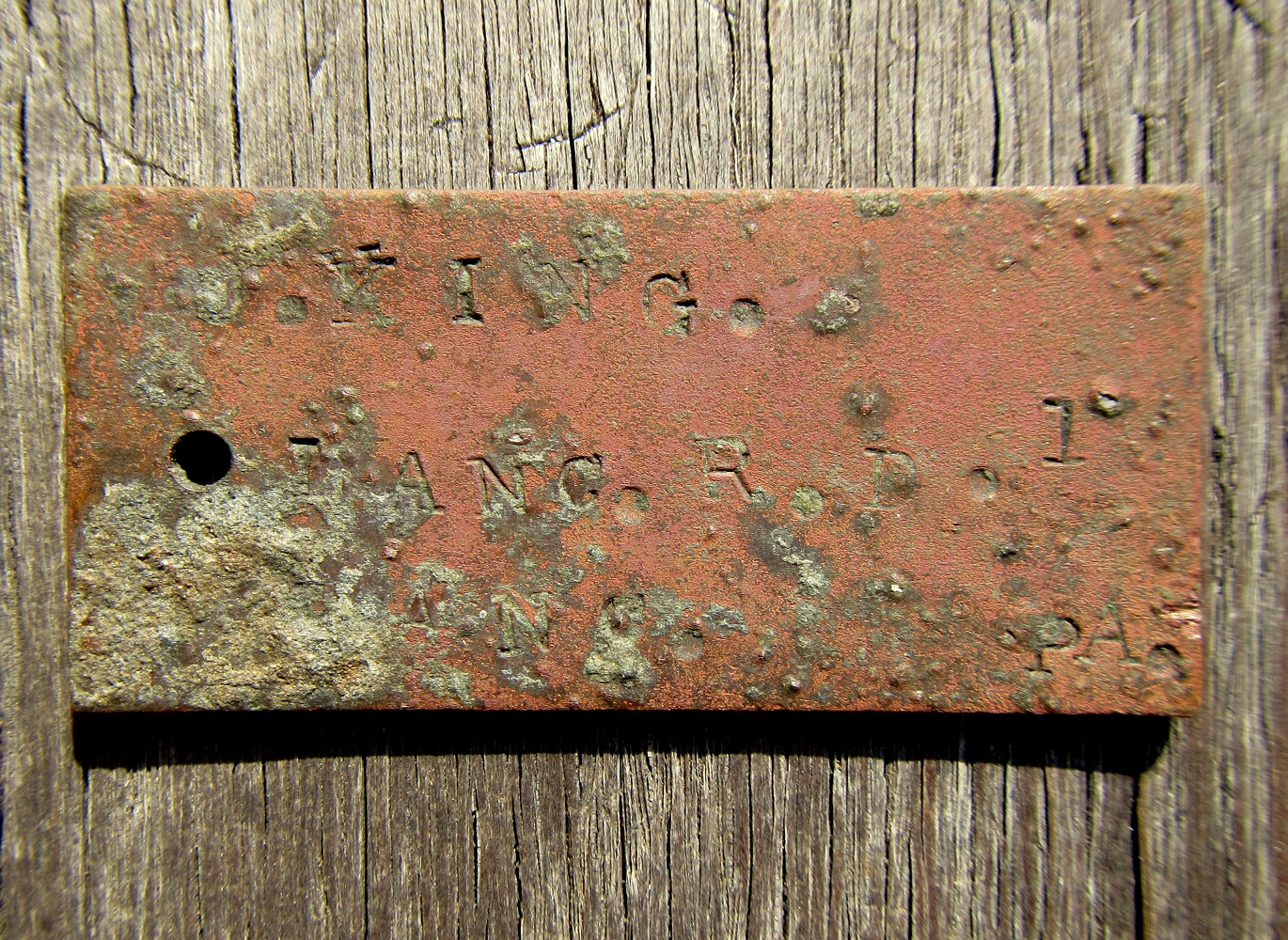 This is a solid copper trap tag, thick and heavy, it’s 2-5/8″ x 1-1/4″. This was hand stamped one letter at a time and wired onto a set trap. It reads: ‘J. KING. LANC. R.D. 1 LANC. PA.’ A very interesting piece of local history. I know of no ‘RD 1’ hearabouts.
This is a solid copper trap tag, thick and heavy, it’s 2-5/8″ x 1-1/4″. This was hand stamped one letter at a time and wired onto a set trap. It reads: ‘J. KING. LANC. R.D. 1 LANC. PA.’ A very interesting piece of local history. I know of no ‘RD 1’ hearabouts.
Back in my Backyard
Detecting any area, you might think you found everything, but that’s never the case. My yard is about four acres with still plenty of deep signals, most are iron scraps and pieces that settled deep. But this was no random piece of iron. Remember the lead handled iron bladed knife? Turns out it wasn’t the only one. Back further behind a shop building I got a nice ringer of a signal and had to go deep. I was thinking just iron but I was in for a surprise. My camera was in the house, (as usual) and I didn’t get dig pictures, but lets just say it was so deep and such a struggle to get it out that my mind wasn’t on the camera, but the hole. What I unearthed was this:
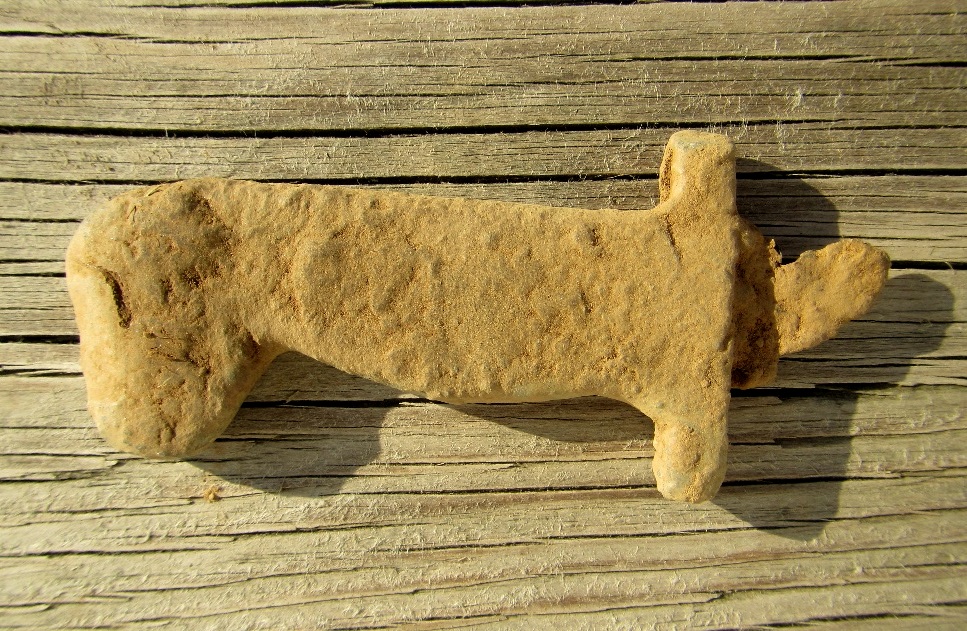 The first example was the opposite, a blade with very little handle. The very butt end of this handle was seven inches down and was sticking straight down; the blade end being over a foot deep. I was astounded with this find.
The first example was the opposite, a blade with very little handle. The very butt end of this handle was seven inches down and was sticking straight down; the blade end being over a foot deep. I was astounded with this find.
Note the small size, they had smaller hands back then. What still fascinates me is the exhausting attempt to date or even indentify this type of knife. Obviously homemade as casting lead was very common 100 to 200 years ago.
Above photo shows them for up close comparison and detail. If you know anything about these type of knives, don’t hestitate to contact me with information.
Fantastic relics under glass. I’ve encountered no others even close to resembling these in all my research. I’m thinking these may be unique.
I didn’t pay closer attention to a far end of the property until more recently. Popping out this beautiful green 1890 indian head penny was a nice surprise. There were a few other items in that area too.
Two interesting old buttons, the convex on the right has the full shank and the one on the left does not, but the gold gilt remaining makes up for that. Both feature a similar weave and line pattern and were found deep.
This is a WWI era US issue on uniforms, a very cool little cuff button. I can dig that.
With the melting of snow, I was able to pull a trifecta of dog tags from a spot (pun intended) in my front yard. Lancaster County, 1936, 1937, and 1938. Likely a lost collar pre WWII and the leather decayed leaving the tags. (Don’t mind the clad and wheaties.) This was a quick after work dig.
The Lead Head on the Road to the Dead
I sometimes think all my finds favorites, yet this guy is something else and quite unique. There is a field road up the hill to the cemetery behind me which dates back to the 1700’s. Having asked for and received permission to detect there, most of what I found were musket balls, very old ones at that. This guy rang loud and clear and was down quite a ways. Again, here we are noting that on old farms and homesteads, folks cast their own lead. This includes fishing or net sinkers as I know from reading (researching) the local news from the 1830’s to the 1930’s, bass and shad fishing were very popular on the Susquehanna River which is just down the road. What I love about this 6 ounce sinker is the maker took his knife (a lead handled one?) and made a happy face on it with the tip before the lead had completely cooled. I imagine he did it for his son, who was maybe ten years old.
I had my camera handy for this cute find. Lead tends to patinate white when in the ground for a long time; there’s no telling just how old this guy is, could be 1800’s, 1900’s, not sure and I guess it doesn’t matter as I’ll never know. I love how he sits on display and seems to look at me when I pass by.
There was another interesting find on the old cemetery road. Very deep iron, but I went down for it anyway. At first I thought, Oh no, a handle had come off of a coffin on the way to a funeral. By looking at it in situ, it’s easy for that to be the first reaction.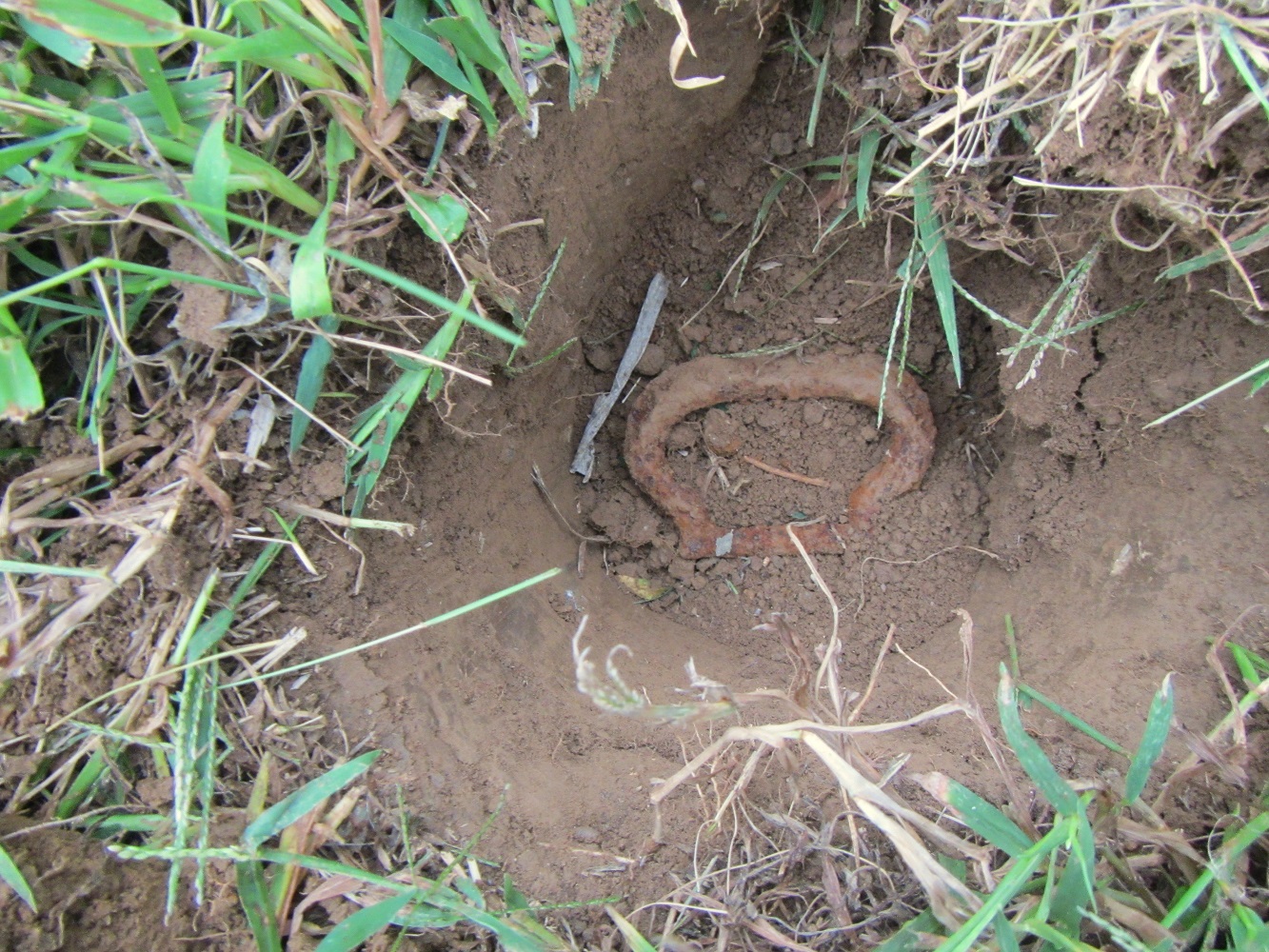
On a 200 year old cemetery road, you might think it’s a coffin handle, but it’s a girth cinch handle for cinching the saddle on a horse. More common are horseshoes, so I decided to make this a keeper, although I haven’t cleaned it yet.
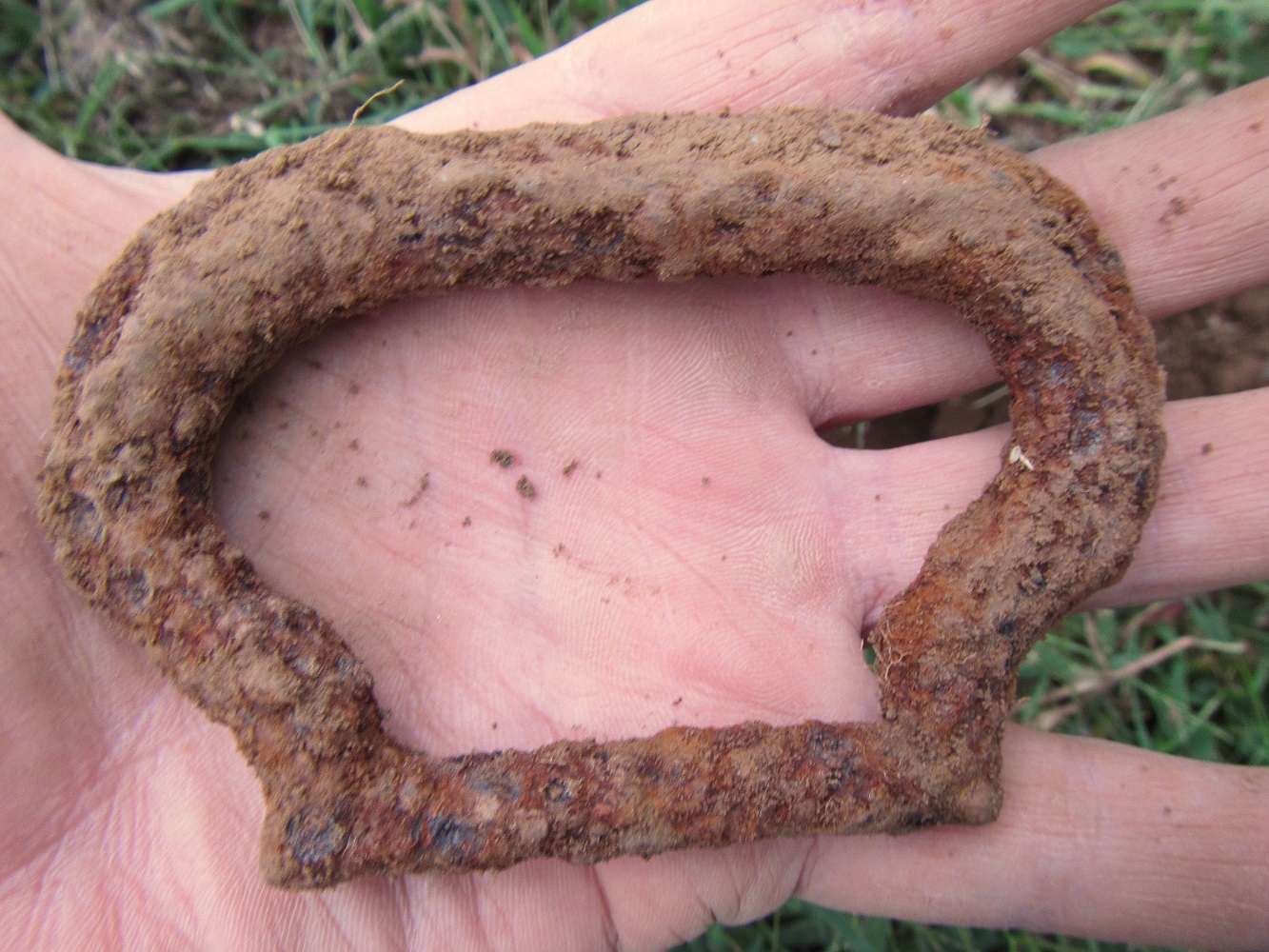 It’s a good sized and heavy piece; I’ll be surprised to find another.
It’s a good sized and heavy piece; I’ll be surprised to find another.
Field Finds
The larger the area, the more difficult to detect. A yard is easy, you know where you’ve been. No so with a field. I went back to where I found a beautiful skeleton key deep and an indian head penny right on the surface. This is across the road from the 1793 tavern. Turns out I had left some interesting finds there (and likely still have). Been getting lazy with the camera on each find, shown below is a group of items found in one general area, maybe 10 acres.
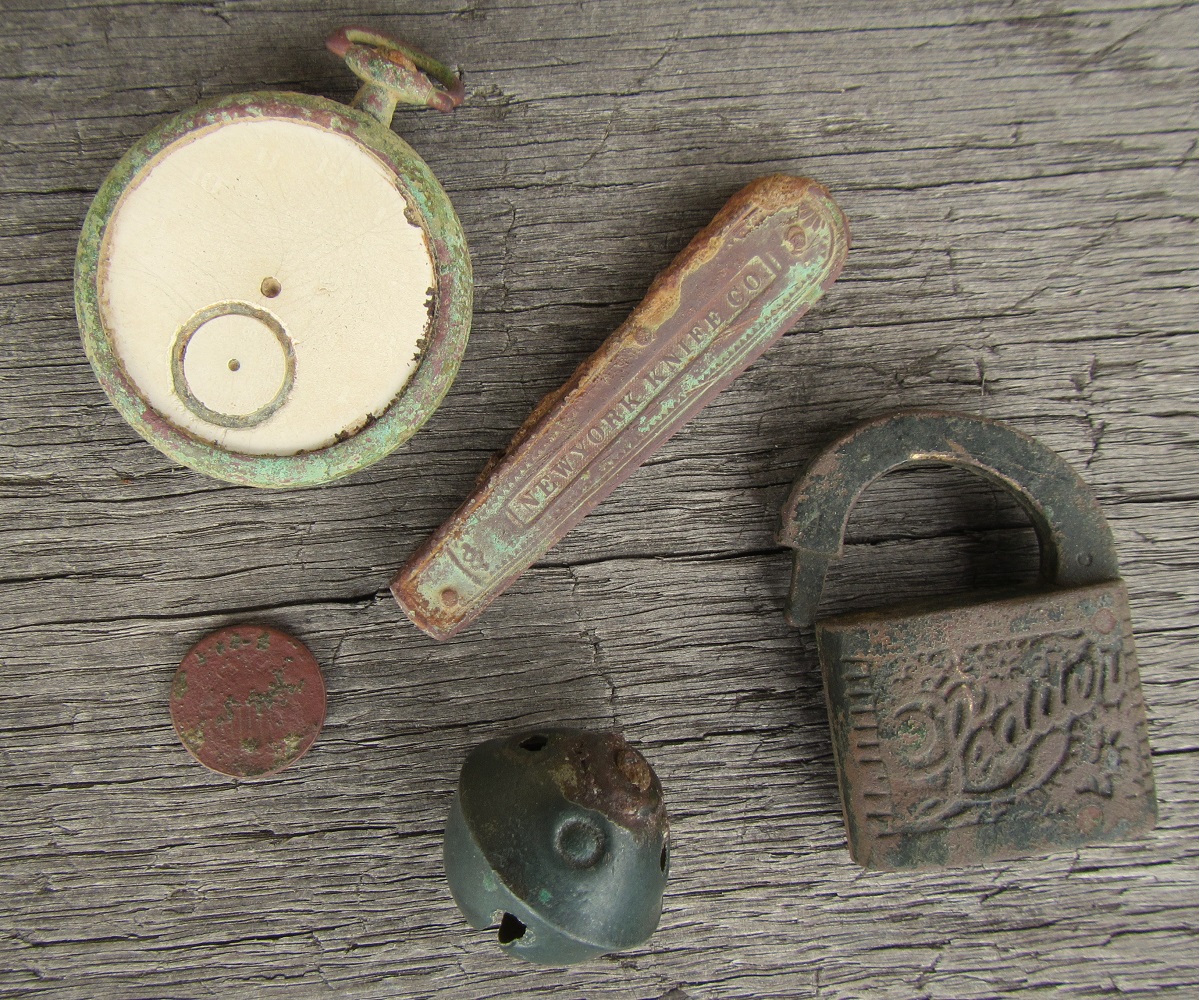 The pocket watch, an Elgin circa 1900 and the ‘Leader’ padlock were a bit close to each other. The ‘New York Knife Co.’ pocketknife was isolated and alone. The small crotal bell, (love the jingle) brass with a long gone iron top was not far from the shield nickel, our country’s first nickel, this one dates 187?, as the copper content has made it a bit toasty. It took two days of steady swinging to locate these, again, it’s very hard work and pounds of trash were also dug in the finding of these items. There was also a copper ‘smoothie’ or ‘slick rick,’ which I’ll show later as you’ll see why.
The pocket watch, an Elgin circa 1900 and the ‘Leader’ padlock were a bit close to each other. The ‘New York Knife Co.’ pocketknife was isolated and alone. The small crotal bell, (love the jingle) brass with a long gone iron top was not far from the shield nickel, our country’s first nickel, this one dates 187?, as the copper content has made it a bit toasty. It took two days of steady swinging to locate these, again, it’s very hard work and pounds of trash were also dug in the finding of these items. There was also a copper ‘smoothie’ or ‘slick rick,’ which I’ll show later as you’ll see why.
This equine brass ring is a very cool find, note the stretch and thinning.
Old bullets (and new ones) turn up everywhere. Shown above are round balls, some musket, smaller ones are from pistol. The 3 ringer minie was found along the old cemetery road.
From a different property field were some 30 odd blank keys all in a 10 foot area. Likely a burn pile in the mid 20th century. It was interesting finding all these.
All strung to keep things organized, actually two of them were cut. (At each end.) You just never know what’s under the ground.
Benjamin Franklin’s quip about a penny saved being a penny earned certainly shows he didn’t invent the metal detector. Any detectorist will nod in agreement to a penny found is a penny earned. I spent all day in a field with endless trash targets, some items that were cool, but not enough to write about. Then I happened across this, an 1839 matron large cent. This baby was definitely earned.
Heads I win.
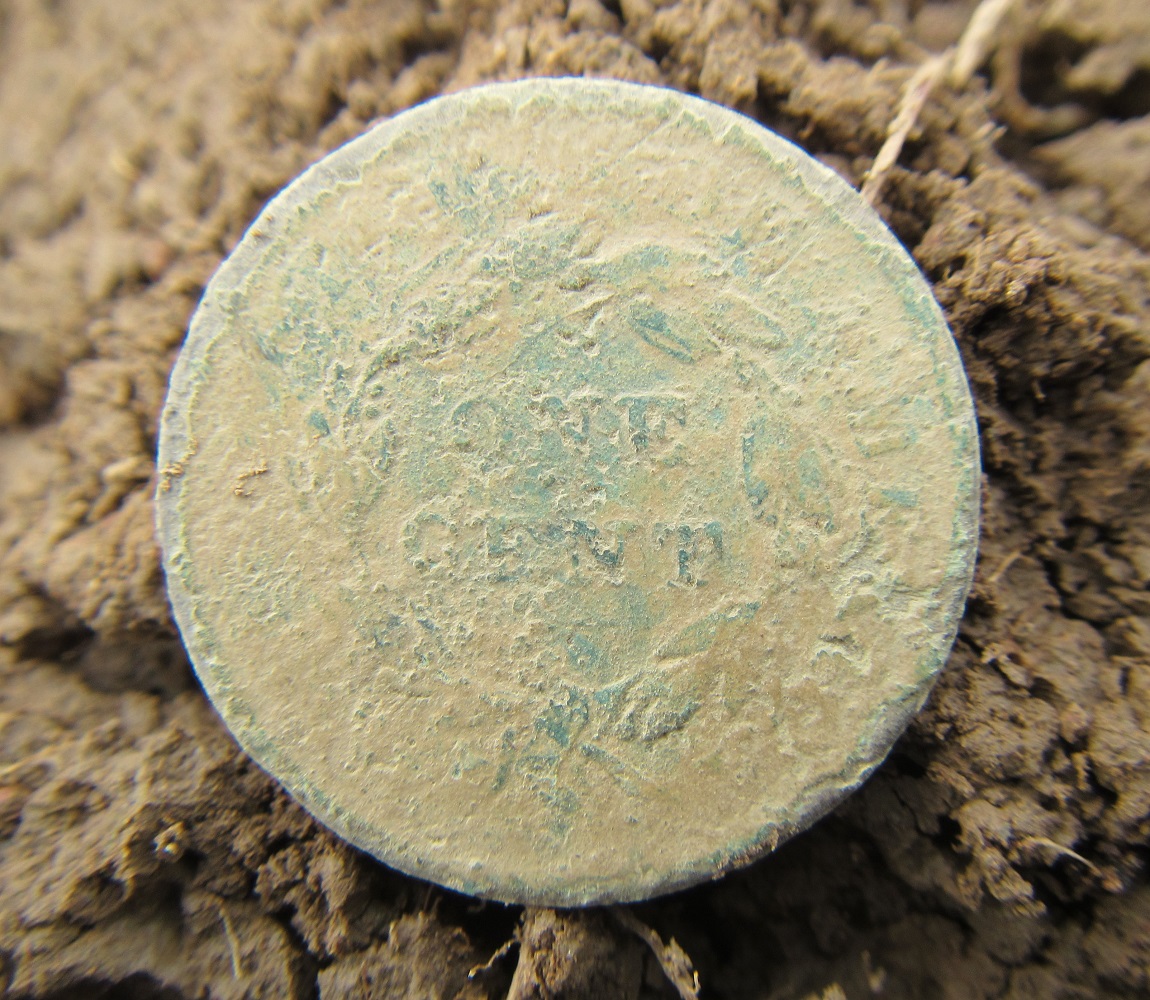 Tails I win too. I was exhausted when I got home.
Tails I win too. I was exhausted when I got home.
A Couple Permissions Here and There
I detected a large yard of a 1700’s farmhouse a few miles north of me. On two sides of the property was a large public park that was known to be detected and is still. After a lot of hard work and 2 wheat pennies, I realized that like many places that have been hit possibly more than once, somebody had eaten the pepperoni off of this pizza. It was a long, weary day and as I worked my way to the driveway/parking area, (furthest point from the park) I got a whopper of a signal and lo and behold:
That’s a big skeleton key.
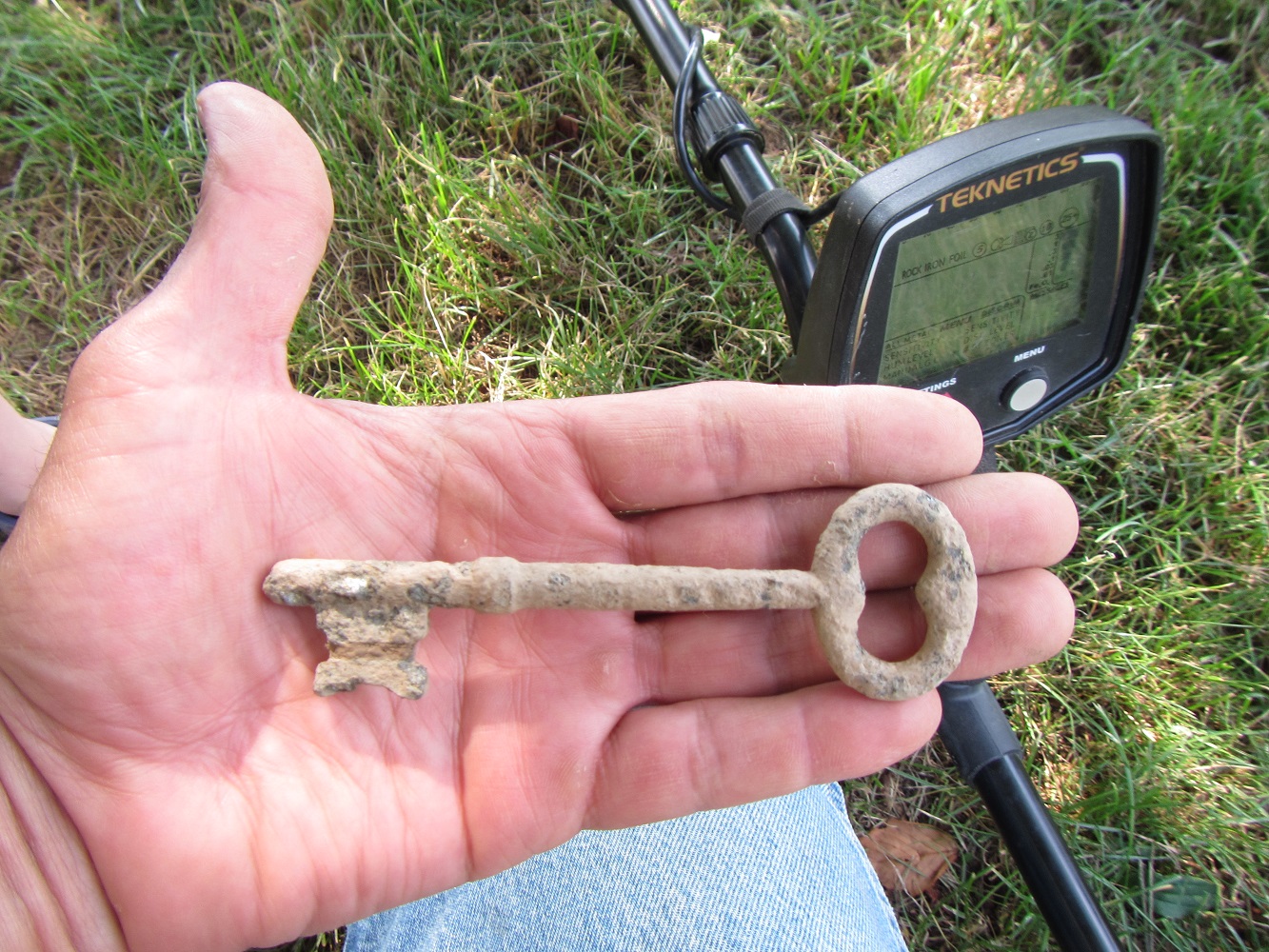 A wowzer. The next find was almost under the driveway, furthest from the hard hit park. I suspected the yard had been hit over the years, but they didn’t get it all. Nobody does. The next find is one of my absolute favorites.
A wowzer. The next find was almost under the driveway, furthest from the hard hit park. I suspected the yard had been hit over the years, but they didn’t get it all. Nobody does. The next find is one of my absolute favorites.
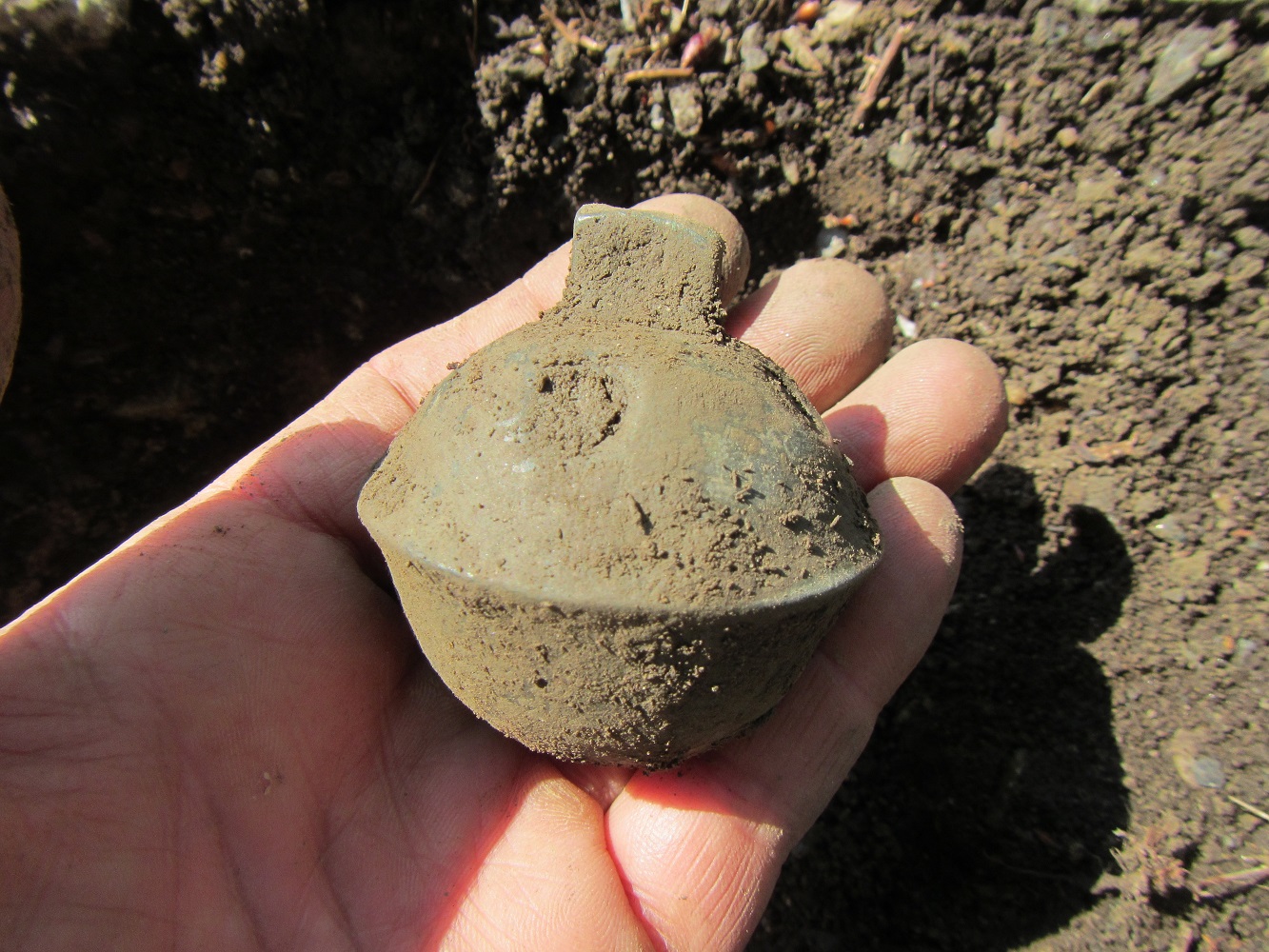 A large crotal bell. ‘Crotal’ is the latin word for rattle. This wagon or harness bell is a beauty, all brass with a iron ball inside and it still works, it’s got a design on it and a number 8. I call it my ‘Klunkle Bell.’
A large crotal bell. ‘Crotal’ is the latin word for rattle. This wagon or harness bell is a beauty, all brass with a iron ball inside and it still works, it’s got a design on it and a number 8. I call it my ‘Klunkle Bell.’
This is so cool, I love these bells because it’s not only the sight of an 1800’s artifact, this brings to your ears the sound of the 1800’s.
My Most Valuable and Rarest Find Yet
No, it isn’t the two reale; those can be had all over the intrawebs for not a lot of money. I got a permission to detect a yard across the river in Wrightsville and I didn’t have my hopes up, (these days I never do) but this turned out to be a fascinating day. It was a 1940’s house with a tiny yard, the back yard was entirely modern pocket change except for one find that made the owner’s day. She had lost her grandmother’s Navajo turquoise and silver ring some five years prior. I didn’t know that, but upon finding the ring, I knew it had to be hers, or at the very least I should ask if she lost it. Why yes, she said, five years ago and was estatic to see it again, even covered in dirt. The front yard is just a tiny corner with brand new sidewalk and street repair had gone on there so I wasn’t expecting much. I love being surprised:
Wow. This brass 2″ x 1-1/4″ turnpike token is an absolute winner of a find. The Wrightsville Chanceford Turnpike was just 5 miles long and chartered in 1881. This is very collectible to any token collector and I know I won’t see another. Quite a rare local piece of history. I suspect it was under the street and when all that work was done it ended up in her yard. It wasn’t but 5 inches deep and signaled like a silver dollar. This is from the days when a turnpike was owned privately and you had to pay to have the log rolled back and you sure weren’t driving a car.
To Clean or Not to Clean
That certainly seems to be the question with copper coins. If it’s something that’s so toasted and literally unrecognizable you may as well clean it as if not, you’ll never know what it is. Having found a real ‘smoothie’ that I had soaked in hydrogen peroxide for four days and still only then caught an inkling of what it may possibly be, I chose to take some dishsoap and a scrubbie and take it down to the metal to solve the mystery.
So, what is that? There is no way to tell unless you act on it. Are you ruining something potentially valuable? No, it’s not valuable unless you know what it is. And even then, it’s not desirable to a nitpicky collector unless it’s near mint condition. You’ve nothing to lose.
After four days in peroxide, you can start to see a bust facing right and the reverse appears to be english. I wanted to see what this was, nothing I find is for sale and I would rather see the coin for what it is. After a scrub, below is what I was able to see and identify.
Nova Eborac is latin for New York. This has the date of 1787 and was made in New York representing a half pence made from 1787 until 1820. This was found maybe 1000 feet from my back door. The reverse needs more cleaning, but I know the date is long gone so it stays as it is.
So, the mystery is solved and I’m quite happy with the results. I photographed it when it was still a bit shiny, now it has quickly turned copper brown and looks as it did 1787-1820.
Very cool. I love the copper glow. This wasn’t the only one, I have found four smoothies and the one below was not photographed when found, it was just a green flat slug found near the 1870’s shield nickel and the small crotal bell in a field. I love the effect, a ghostly image of what it was, a 1796-1807 draped bust large cent. Both sides are now recognizable.
Note the copper ‘blooms’ in certain areas. If I didn’t do anything with this, I’d still have no idea what it is. Very rarely do you find coins of any value metal detecting, so to me, there’s no big deal.
So if you’re against any type of cleaning of coins and you’re cringing right now, maybe these two below will make you feel better. I tried but to no avail, they’re so toasted they’re porous and impossible to recognize.
The one on the right is thick and is likely an American large cent, on the left is very likely a english half pence as it is thinner. I will never know with these two.
Detecting Columbia
The town of Columbia, Pennsylvania is so quaint and historic and so nearby, I love it and had to join the Columbia Historic Preservation Society. I’ve just started to detect there and realize again, I’m not the first. I started with Locust Street Park, a tiny park that most certainly had the pepperoni eaten off that pizza. But, knowing that going in, I decided on a strategy. I started with the edges and corners, hoping for predisposed laziness and sure enough, in a far corner right near the sidewalk was a deep high hitter.
An 1894 silver quarter that was overlooked. To find this in 2016 in a hammered park is proving you can do something with your detector.
Amongst the modern coins and bottle caps, and trash, I also managed to find a milestone rarity.
Yes, it is exactly what you’re thinking, a 1909 Victor David Brenner VDB wheat penny, the first year issued with the initials on the reverse base. If this had a San Francisco mint below the date it might be worth a few dollars, but even finding this was amazing. Below is the slightly toasty reverse and the VDB is impossible to make out in the photo, but it is there. Probably a five dollar coin.
Then along another edge of the park I get a high signal right in amongst the trashy signals and this offers a bit of greek drama.
Half of a greek drachma with King George III on it, no date, but is late 1800’s to early 1900’s. Probably cut by a lawn mower which is interesting as that would indicate it was dropped more recently. Another mystery.
It’s greek to me, but that word in greek is drachma.
Very hard work.
But I’ll pick up my metal detector before even thinking of buying a lottery ticket.
You never know.




